Do you ever feel frustrated when children don’t seem engaged during activities you planned? Or wonder if your teaching is actually helping them reach key milestones and learning outcomes? As educators, we all have those doubts sometimes. The solution is shifting to a more intentional approach.
But doesn’t that mean rigid lesson plans and scripted activities with no room for spontaneity?
Not at all! Intentional teaching is about being thoughtful in utilising those spontaneous teachable moments too.
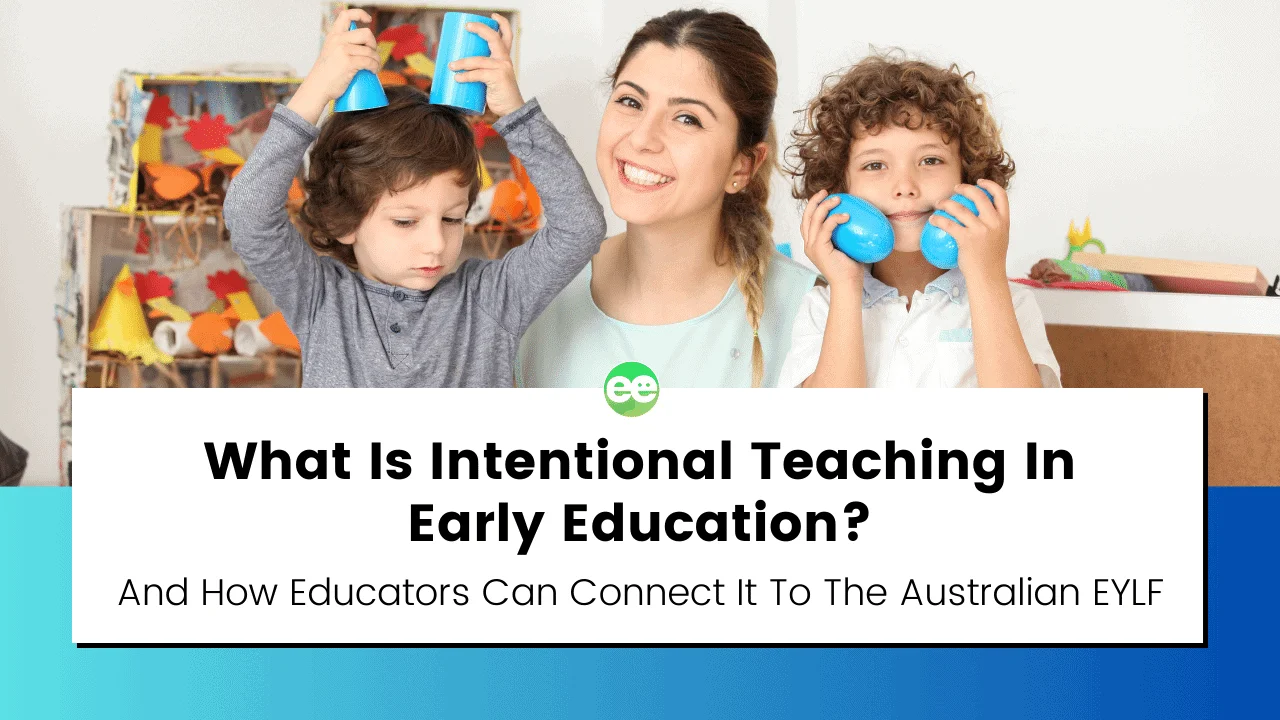
In this blog post, you’ll find out how to incorporate intentional teaching in a flexible, responsive way. I’ll address some common misconceptions and I’ll show you examples of strategies that you can use to actively promote learning while still letting the child lead.
Whether you work in an early learning centre, family daycare or preschool setting, you'll find inspiration to teach with greater intention while maintaining a balance of creativity, investigation and fun.
Our goal as an educator here is to find the right balance between teacher-facilitated learning and child-led play and exploration.
So you’ll know exactly how to remain responsive in the moment while also having clear learning goals and plans to promote growth - you incorporate a mix of both approaches…intentionally.
Let's start by exploring what intentional teaching really means for us in the context of early childhood education..
In a hurry? Use the contents box below to dive in and out of the topics when you have the time or want to reflect on a core strategy - think of them like chapters in a book!
You can also listen to a shorter version of this blog right here on the page or in your fav podcast player including Spotify!
What Does Intentional Teaching Mean?
Intentional teaching, as outlined in the Australian Early Years Learning Framework (EYLF) and National Quality Standard (NQS), is a pedagogical approach where educators actively plan and act with specific learning goals in mind for children - we make deliberate, purposeful decisions and then take intentional actions to support the learning outcomes and development of the children in our care.
It involves much more than passively supervising play or activities!
When we're intentional, we carefully assess what each child knows, what skills they have already mastered, and what interests them.
We use these observations to personalise early learning opportunities for each child.
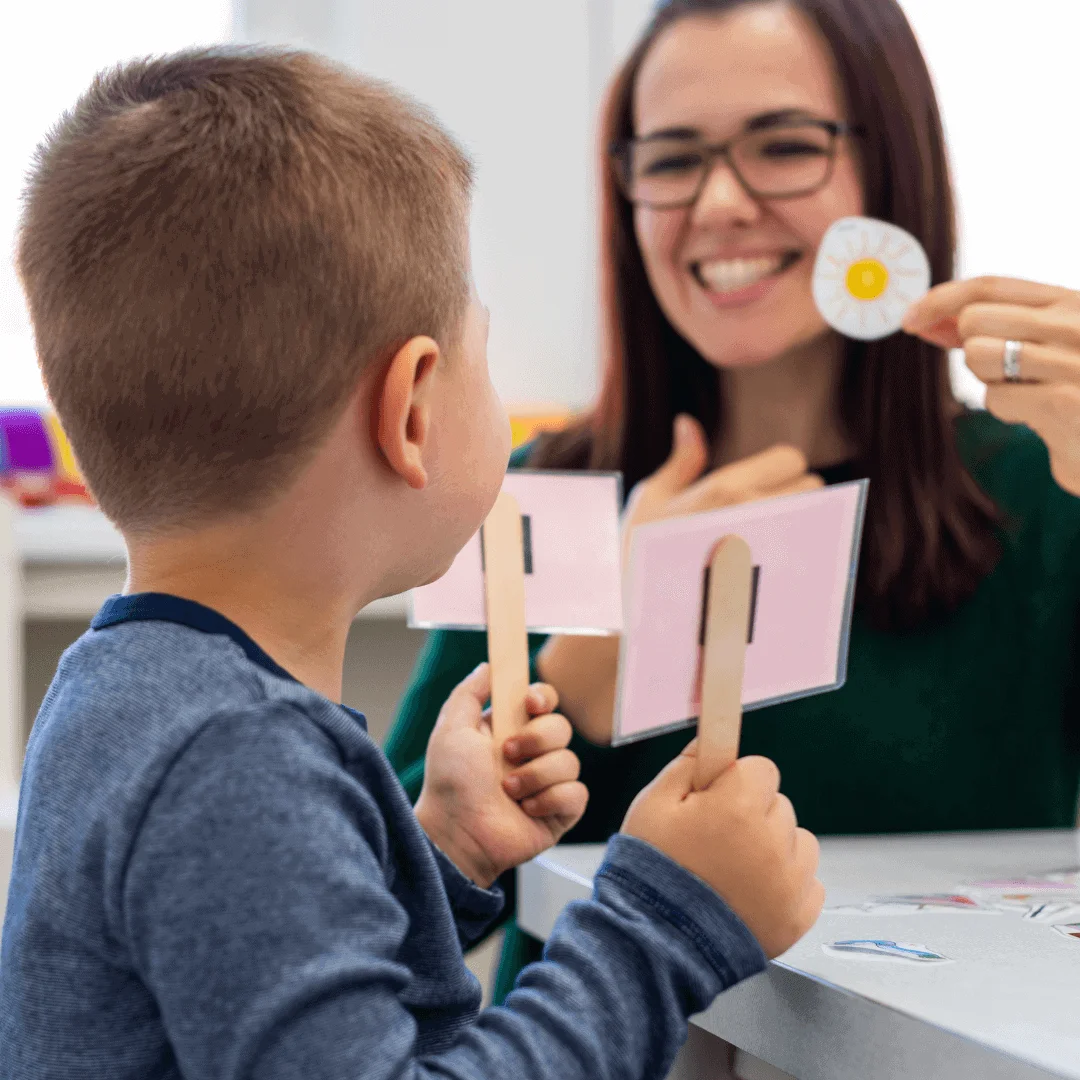
Let me give you an example. Say I notice Alex is beginning to recognise some letters during play. I might gather items around the room that start with those letters and place them together at a table. When Alex comes over, I can point out the letter connection, helping to build on what Alex is ready to learn next.
That is intentional teaching in action!
Being intentional is all about looking for opportunities to actively promote learning. Instead of just supervising or setting up play experiences, we become involved in more meaningful interactions.
Aim to keep educational goals and outcomes in mind when planning forward that are based on your observations and knowledge of the child’s interests and strengths, but also understand how to work flexibly to integrate them into everyday routines, activities, and environments in an organic way.
The Core Principles of Intentional Teaching
There are some core principles that guide intentional teaching in early childhood environments.
Let's break them down into simpler terms:
Have learning goals & outcomes in mind…
With intentional teaching, we have specific educational goals or outcomes we want to support or extend on for each child as well as the group.
These goals are based on observations and assessments of the children's skills, needs, and interests.
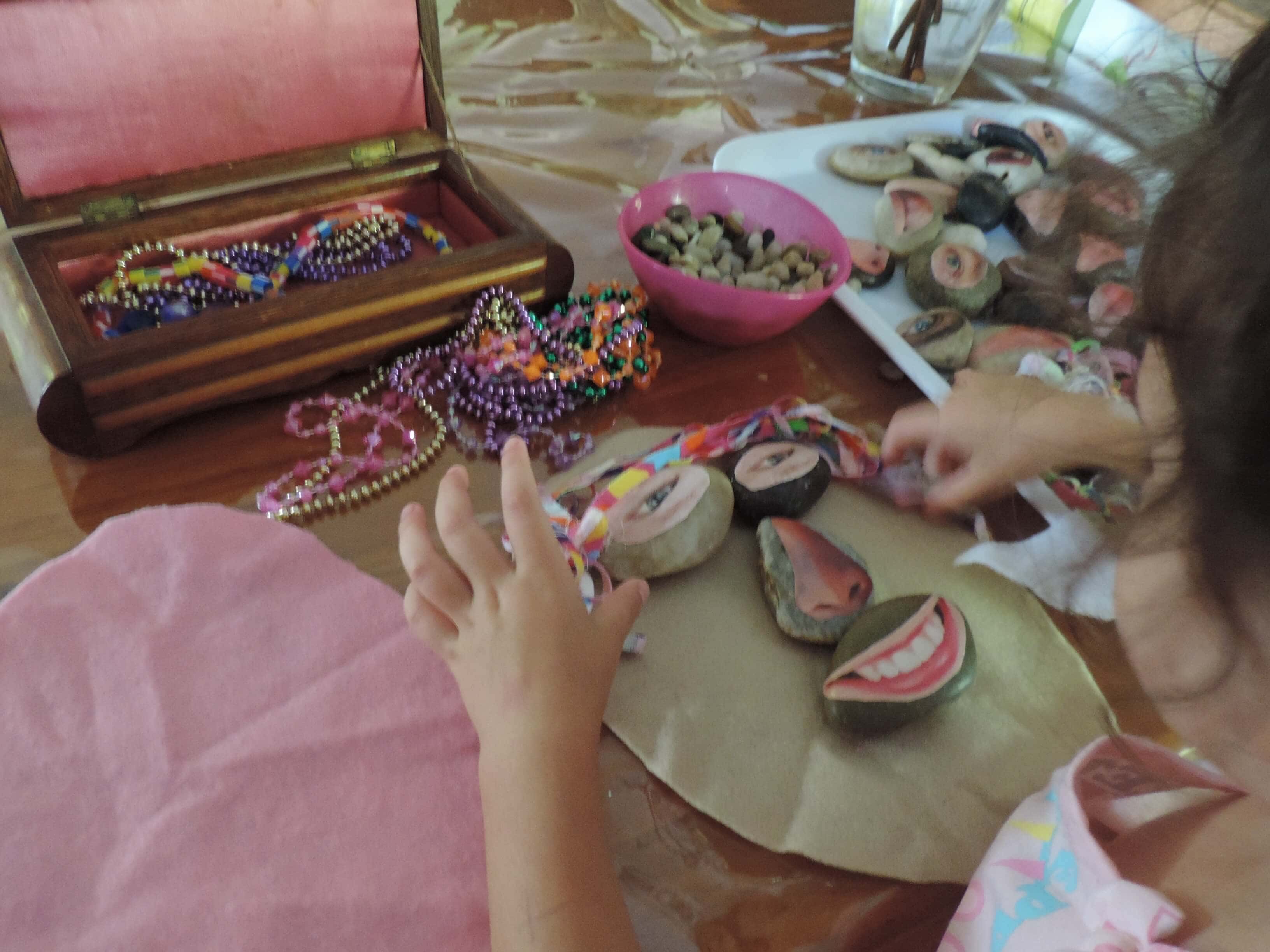
Spend time planning the environment…
We carefully plan the layout of the indoor and outdoor spaces, the materials provided, the daily schedule and routines to support our learning goals.
We might rotate materials or make changes to the learning environment based on observation notes.
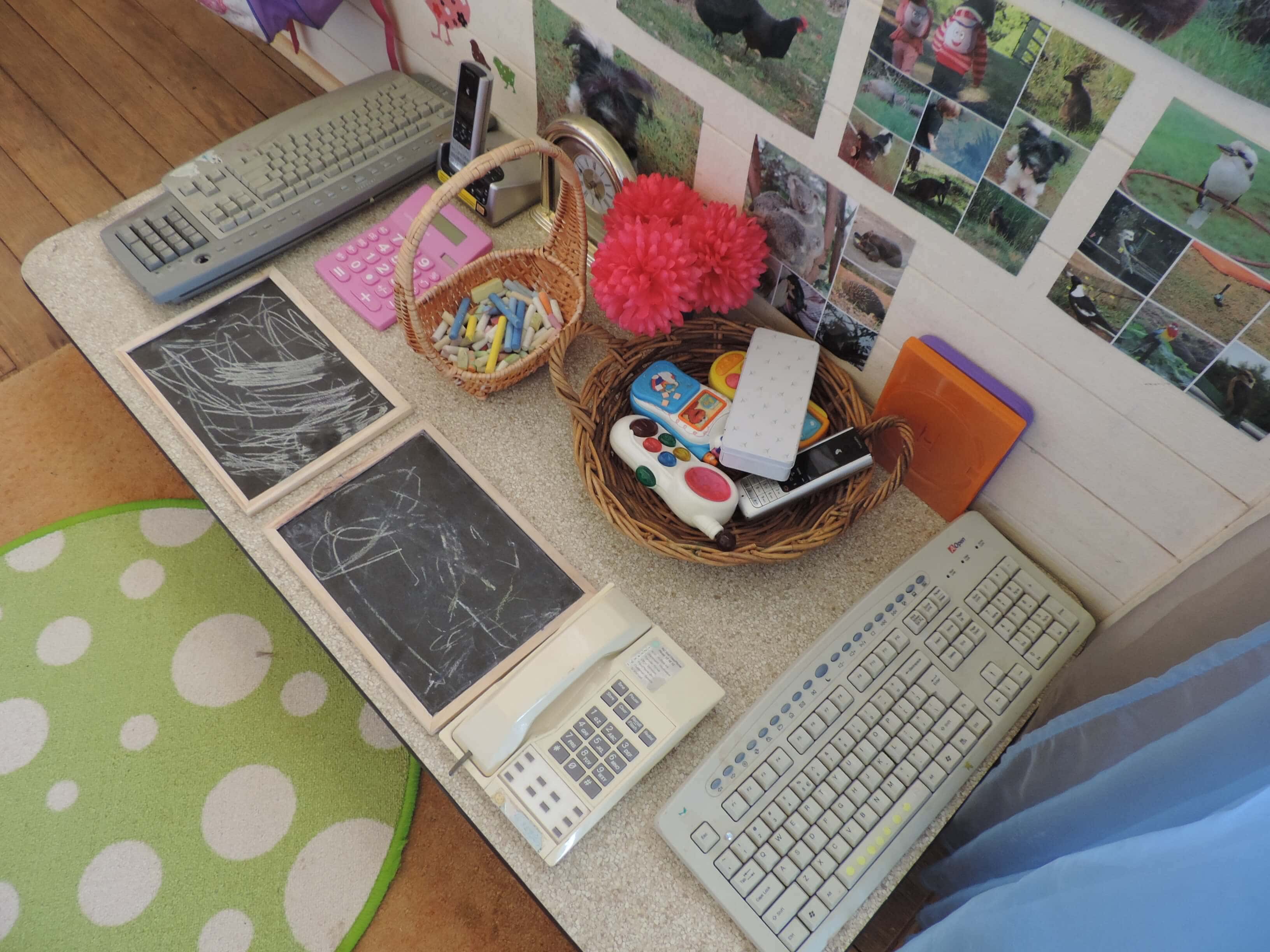
Make the most of ‘teachable moments’…
As we carefully observe children throughout the day, we'll notice times when their play or behaviour presents a chance to encourage learning.
We can jump on those moments to intentionally guide and teach which means we’re making the most of the spontaneous, authentic opportunities that come up to promote skills and growth.
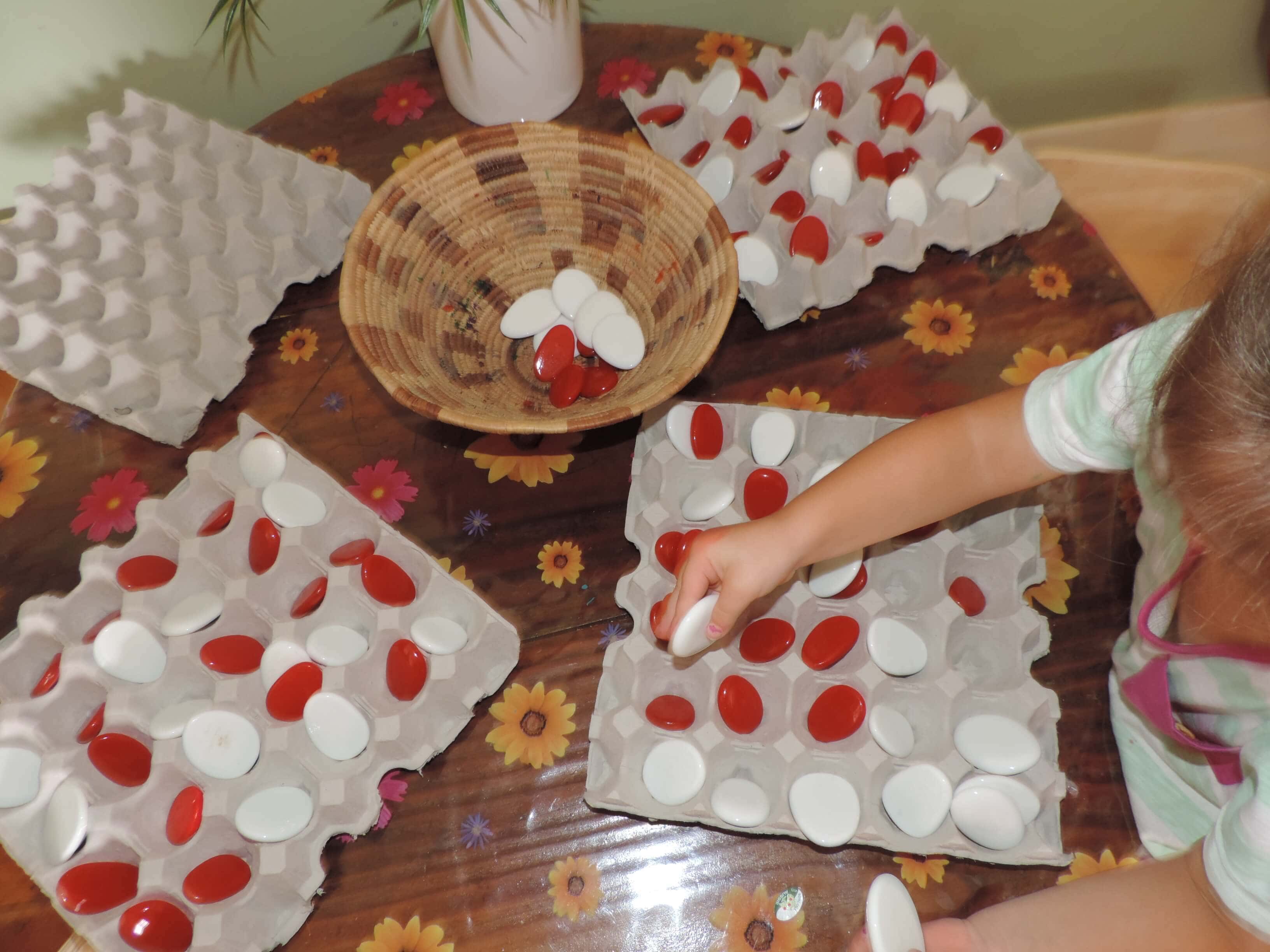
Use a variety of strategies...
Intentional teachers have a toolbox of strategies we can draw upon like demonstrating a new skill, asking thoughtful questions, providing just enough help or "scaffolding" for a child to be successful, modelling behaviours and thinking processes aloud.
Scaffold
"Scaffolding" is an important intentional teaching technique. This means providing just enough assistance to enable a child to succeed at a task they are not quite capable of doing independently yet.
As the child's competency grows, we gradually remove the supports, empowering them to complete the task independently. Scaffolding allows us to stretch children's abilities while ensuring active engagement and success.
Scaffolding can take many forms - modelling a new skill, providing hand-over-hand guidance, giving cues or reminders, breaking a task into manageable steps, and so on. It meets the child where they are and incrementally builds their skills.
Be Responsive
We follow the child's lead and interests while integrating our educational goals. Rather than taking over the play in a heavy-handed way, we gently guide experiences to meet learning objectives.
We want to respond to what engages them, not override their own agenda. By building on what they're already focused on, we can shape activities to subtly align with skills we want to develop.
Promote Critical Thinking
Asking thoughtful, open-ended questions is central to intentional teaching. We want to spark children's curiosity, get them thinking critically and making connections.
Questions that require more than a one-word response are best. We can ask children to explain their reasoning, make predictions, consider alternatives, and articulate their thought processes.
Encouraging children's "why" questions and welcoming their perspectives also promotes the higher order thinking we want to nurture through intentional teaching interactions.
Reflect Regularly
We reflect on what outcomes were achieved, what could be improved, and what to try next. Reflection helps strengthen our intentional teaching practice over time so use the reflection process to continually evolve and increase your skills as an intentional teacher.
Don’t just ‘do’ reflection - you need to actually USE the information from your reflections to then improve on your ability to teach with intention going forward.
Reflect Regularly...
Hopefully I’m reinforcing the concept that intentional teaching is about having a thoughtful approach that keeps each child's development in mind.
Rather than rigidly following only what we have planned for the week or month…we find ways to stay flexible and attentive so we can respond in the moment.
At the same time, we guide planned activities and spontaneous interactions with a focus on nurturing the skills and capacities we want the child to build.
So aim to use a variety of strategies from your educator toolbox daily to promote this learning approach during ‘free’ play and routines.
It takes practise but consistently reflecting will help you to improve and expand on your approach and strategies - to help you decide what works for this child or group and what doesn’t.
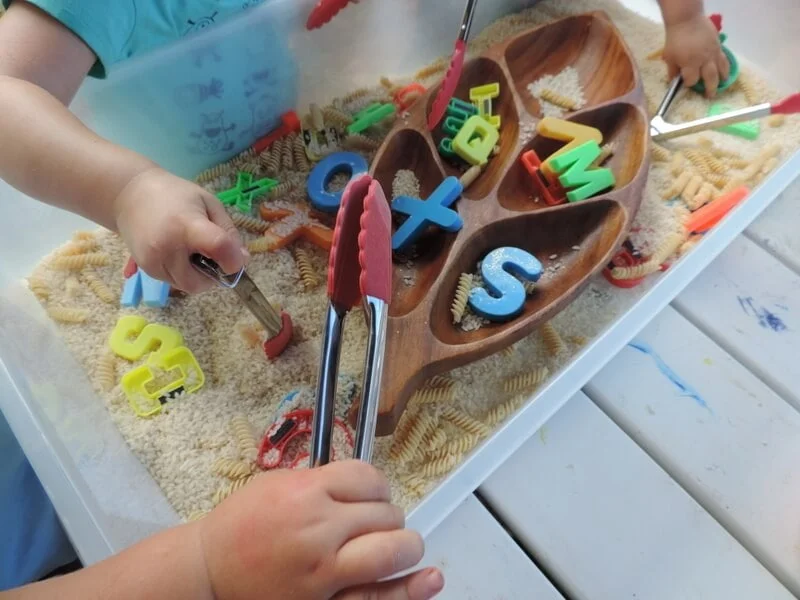
Why Intentional Teaching Matters
You might be wondering why intentional teaching is so important in early childhood environments and why you’re always hearing about it.
It can be confusing when you’re also being told to increase opportunities for child led, spontaneous play too - which one are you meant to focus on?
Well, let’s remember that we are aiming for balance of both approaches rather than a ‘do this one’ or ‘do that one’ decision.
When educators engage thoughtfully with children, it makes a world of difference in their development.
Children thrive when you can interact in an intentional way that sparks their curiosity and critical thinking. The children become deeply involved in the activities, discussions, and discoveries and you can see the learning come to life!
Not only does this foster critical thinking as their minds expand, but the children's progress and skills grow by leaps and bounds.
This intentional approach allows each child to achieve better learning outcomes and your planning and interactions will naturally become more engaging and interesting for you. That's why it's so important for every early childhood setting to embrace thoughtful, responsive teaching.
It makes sense for educators as well as the children. You’re probably already doing it…but just haven’t labelled it as ‘intentional’ yet!

jodie clarke - the empowered educator
Intentional teaching supports rich, comprehensive learning across all developmental domains and framework outcomes like the EYLF.
Common Myths About Intentional Teaching
There are a few common misconceptions when it comes to intentional teaching. Let's expand on a couple of the most popular:

Essentially, we just need to find the right balance between child-led exploration and teacher-supported learning goals.
When done right, intentional teaching feels organic, fun and engaging! It does not mean taking over with a rigid, overly academic approach. Intentionality is all about being thoughtful and purposeful in how we support each child's unique learning journey.
Now that we've explored what intentional teaching means, its key principles, why it matters, and cleared up some common misconceptions, let's expand on some of those strategies with practical ideas that will help you to use it confidently in your own early childhood environment and planning.
There are so many ways we can put intention into action and they don’t need to be difficult!
How To Use Intentional Teaching Strategies in Early Education Environments
As intentional teachers we have a variety of effective strategies that we can use to promote learning.
Let's look at some of the more practical ones that we can use to confidently implement intentional teaching...
The Importance of Observation
Tips For Meaningful Child Observation
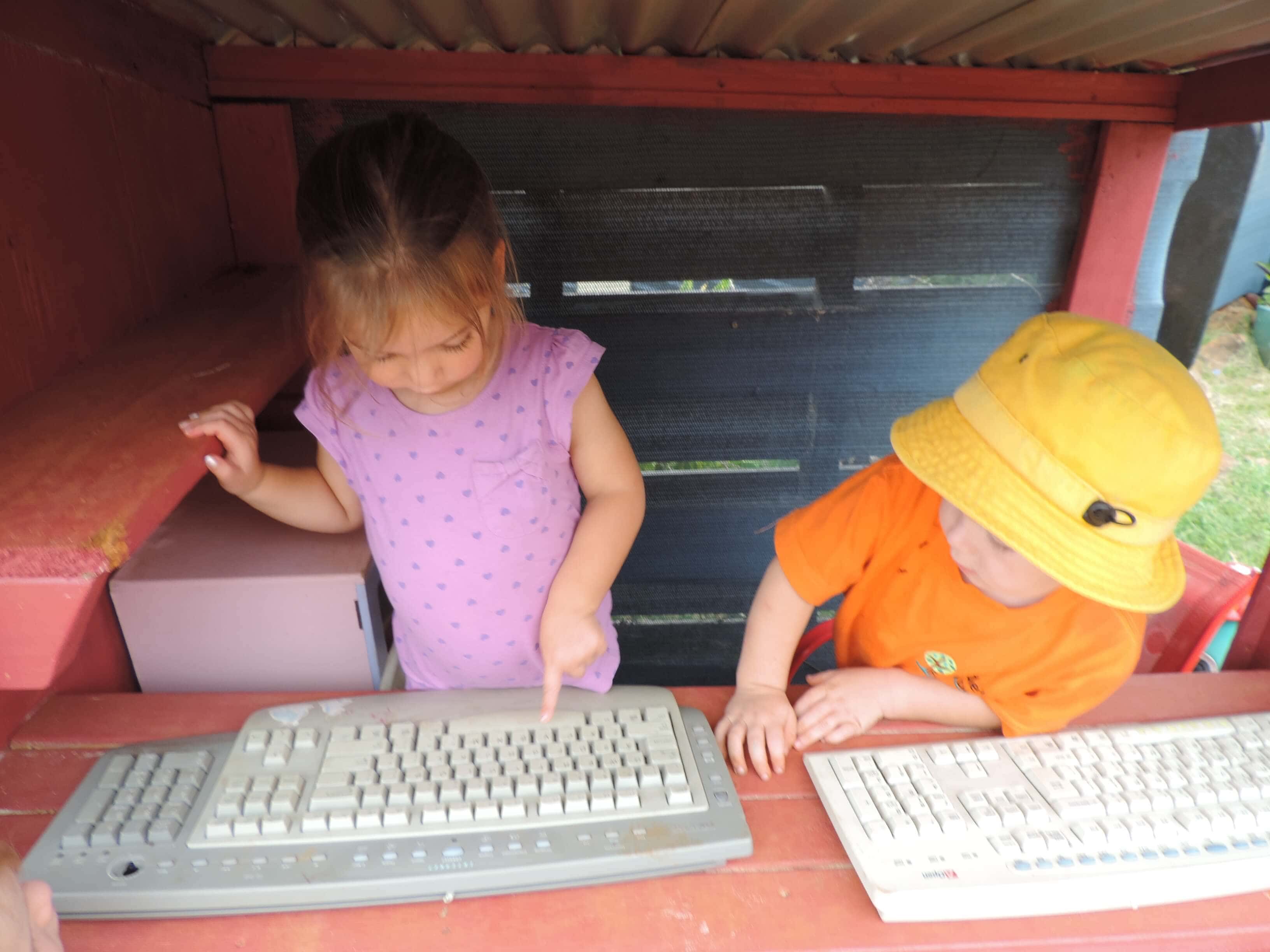
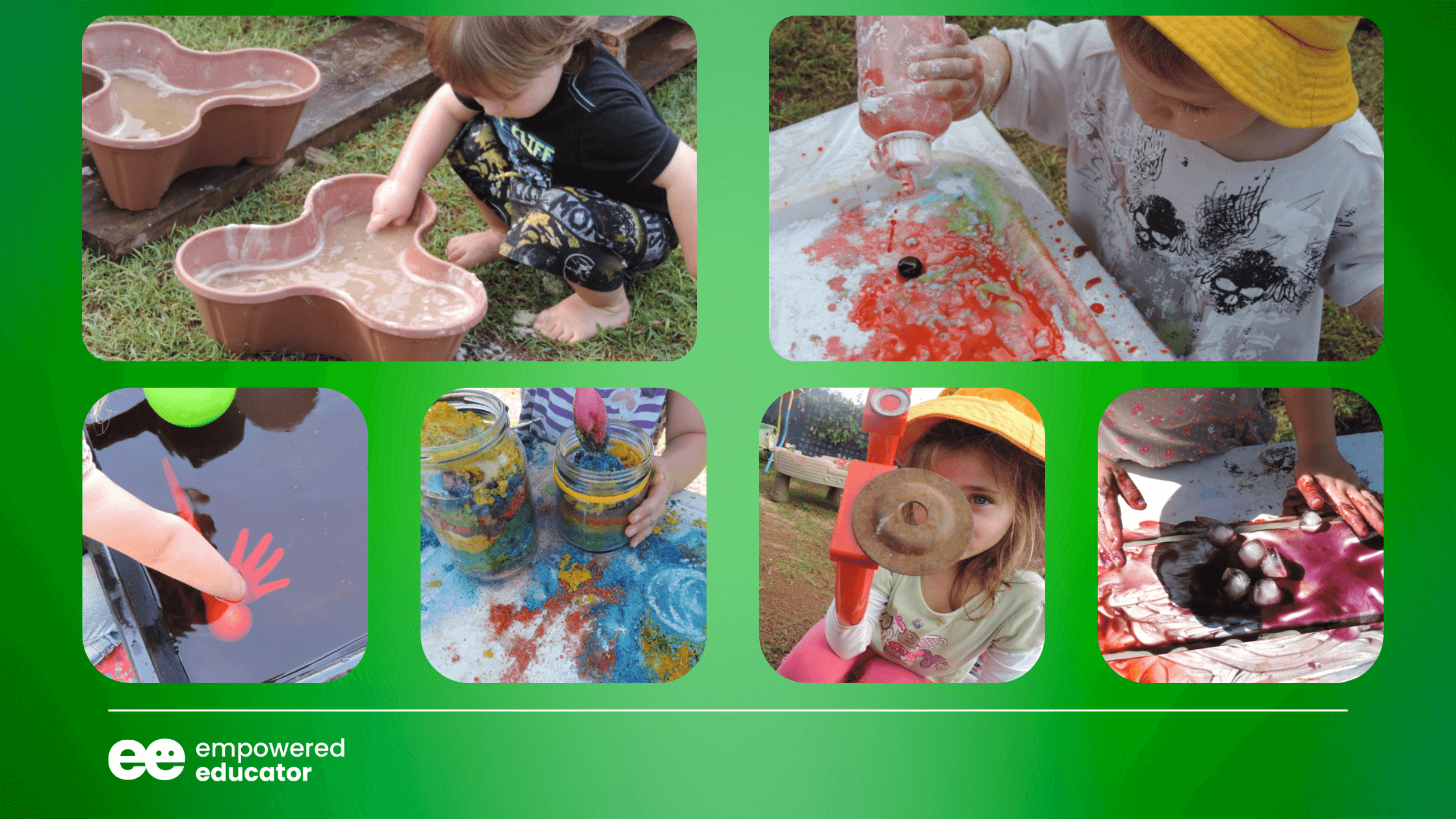
Create Engaging & Intentional Learning Environments
The physical environment plays a big role in intentional teaching. Here are some tips for setting up environments to support learning goals and intended outcomes:
Forward Plan with Purpose - Not Just To Tick A Box
Thoughtful planning is at the core of an intentional teaching approach - let’s recap a few of the essentials so you can make the most of your planning cycle steps and not waste time on unnecessary or unhelpful documentation :
Use Observations and Goals...
Refer back to your observations and learning goals for each child as you plan weekly experiences.
Ensure activities will support achieving those developmental goals.
Partner Individual and Group Goals...
Find ways to connect learning goals for individual children with group learning opportunities.
For example, several children may need turn-taking practice - group games can support this.
Encourage Child Interests ...
Ensure child-led interests are incorporated into planning.
Observe what children are drawn to and find ways to intentionally promote learning through those self-directed activities.
Assess Understanding ...
Plan time and your methods to assess children's level of understanding of concepts introduced during intentional teaching moments.
Provide Choices ...
Provide developmentally appropriate choices for children to develop decision making and autonomy.
Reflect on Plans ...
Continually reflect on which planned activities worked well, which didn't, and why.
Use those reflections to strengthen future planning.
Remain Flexible...
Have a plan or program of activity ideas in place with some structure, but also be ready to recognise and expand on those unplanned moments that are perfect for intional teaching.
When you see the child's interest sparked or a natural opportunity to guide their learning, seize it! Run with the teachable moments that pop up spontaneously and follow the child's lead.
Vary Activities...
Intentionally vary the types of activities you plan - include music, movement, art, construction, sensory play, etc. to promote well-rounded development.
Build Vocabulary...
Intentionally introduce and model new vocabulary words daily in context during activities and routines.
Set Learning Objectives...
Be clear on the targeted skills, knowledge or behaviours you want each planned experience to build.
Link objectives to standards and goals.
Scaffold Challenges...
Setup more challenging situations that require problem-solving, but provide support and guidance to help children achieve some wins.
Encourage children to self reflect....
Ask reflective questions that encourage children to think about what they've done or learned.
The critical factor here is using a variety of strategies intentionally chosen for each child and for the concept being taught.
Your programs and plans should provide engaging activities aligned to each child's developmental needs and interests while still embracing inquiry led play opportunities.
Be Responsive To The Wonder Of Play
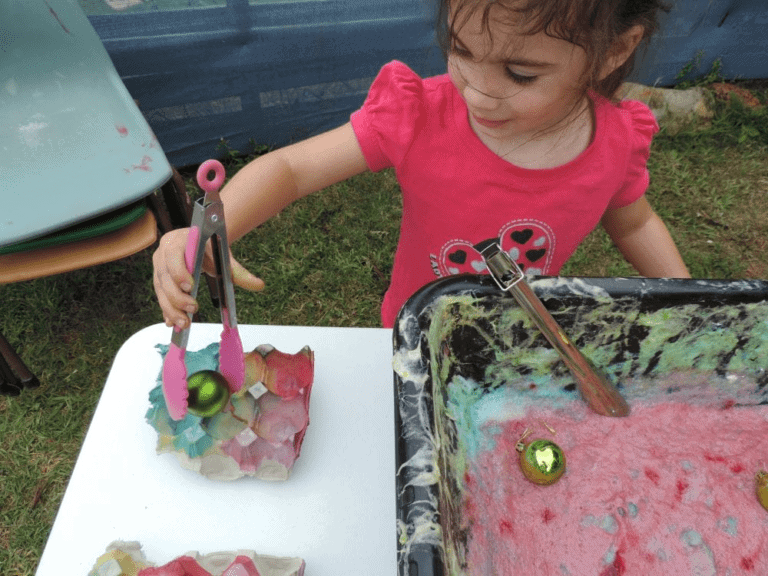
While we have learning goals in mind, intentional teaching also means promoting child led play and discovery - here’s a few tips to support this approach:
Follow the Child's Lead...
Even when we have an educational goal in mind, let the child's natural curiosity and interests lead the way during play.
Meet them where they are then use that knowledge gained to plan future learning experiences that extend on those interests.
Allow Time for Exploration...
Provide children with uninterrupted blocks of time to pursue their own interests and deeply engage in self-directed discovery.
Foster Independence...
Strike a balance between providing support and encouraging independent exploration, critical thinking, and problem-solving.
Prioritise Play-Based Learning...
Child-directed, hands-on play and exploration is essential.
Ensure adequate time for this type of investigative, experiential learning each day.
While intentional teaching has great benefits, child-led play remains crucial and we always want to nurture self-direction, choice, and discovery.
Our goals integrate naturally when we know the child well and are responsive in our approach.
Simple Ways To Make The Most Of ‘Teachable Moments’ In Early Education Programs
Teachable moments are just spontaneous opportunities during play or day to day routines that educators can utilise for intentional teaching - here’s how to make the most of them…
Document Children's Progress in Key Skill Areas:
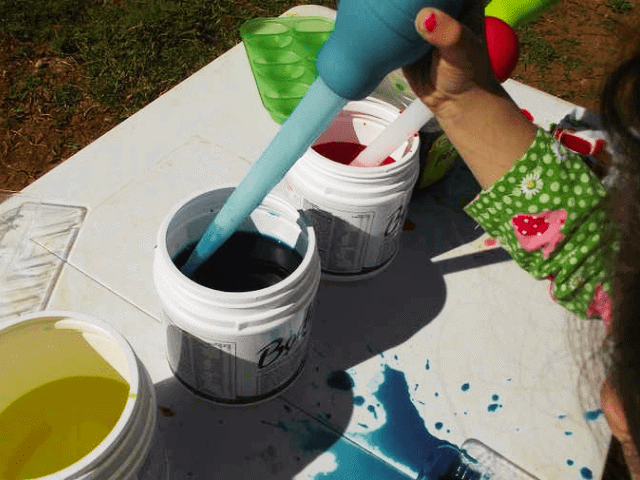
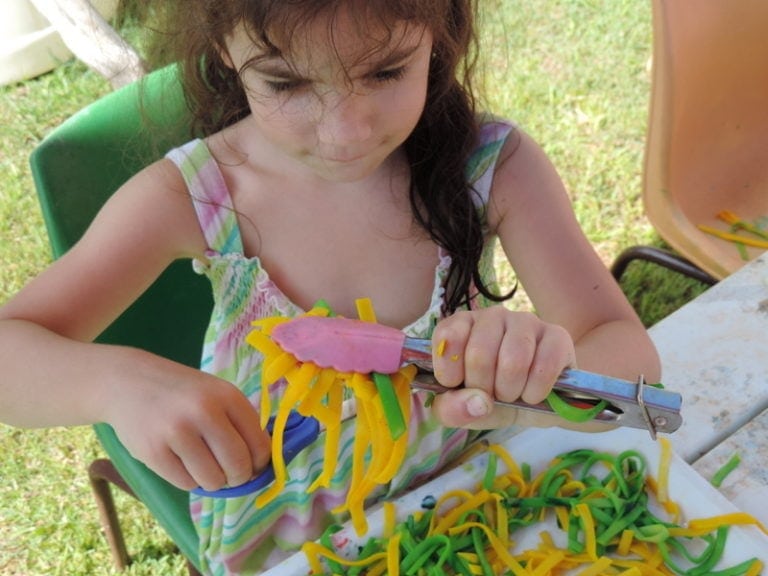
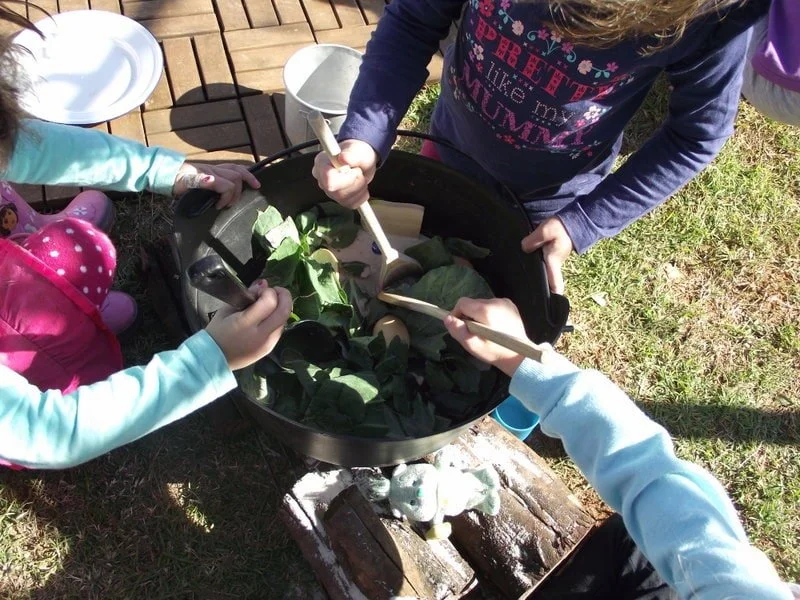
Let's take a look at some in action scenario examples I've provided below to give you a better idea of what intentional teaching in action looks like. While each case study is unique, the common thread is the educator’s deliberate focus in the interactions and guidance.
In each scenario, the educator applies their knowledge of the child along with observation skills to provide the just-right support needed in that moment to further skills and understanding. Whether modelling social behaviours, encouraging problem solving, or guiding shape recognition, the educator acts with intention to scaffold learning for better outcomes.
Scenario 1 - Evan's frustration
I've noticed Evan has been getting easily frustrated during play time lately.
When a block tower tumbled down yesterday, he burst into tears. I recognised it as a teachable moment.
I sat with him and said "It's disappointing when our hard work gets destroyed, isn't it. I see you're feeling very frustrated right now." Evan nodded, sniffling. "Let's take some deep breaths together to calm our bodies when we feel this way." I modelled slowing my breathing while Evan followed along. His tears soon dried up.
"Now we can try again and build an even better tower!" I encouraged. Throughout the day, I continued checking in on Evan's emotions. When frustration bubbled up, we named the feeling together and practised deep breathing before moving forward with a solution.
Validating his emotions and providing coping strategies in the moment has helped Evan learn to self-regulate better. My intentional support promoted his social-emotional growth.
Scenario 2 - Maya's interest in writing
Earlier this week, I noticed Maya was very focused on writing and drawing at the art centre.
She would carefully form lines and shapes on paper with crayons, then proudly hold up her work to "read" it to me. To encourage this emerging interest, I gathered up various writing tools - markers, crayons, pencils, chalk - and set them out in an inviting writing area I created. I also pointed out words around the indoor environment, like the poster titles and names on cubbies, sounding them out as Maya listened intently.
When Maya brought me her latest creation, rather than praising the colours, I asked open questions - "Tell me about what you wrote. What does this say? What are you drawing here?" This extended her literacy learning as she practised explaining her writing.
Maya's interest in reading and writing has increased thanks to intentionally providing tools for exploration paired with meaningful interactions.
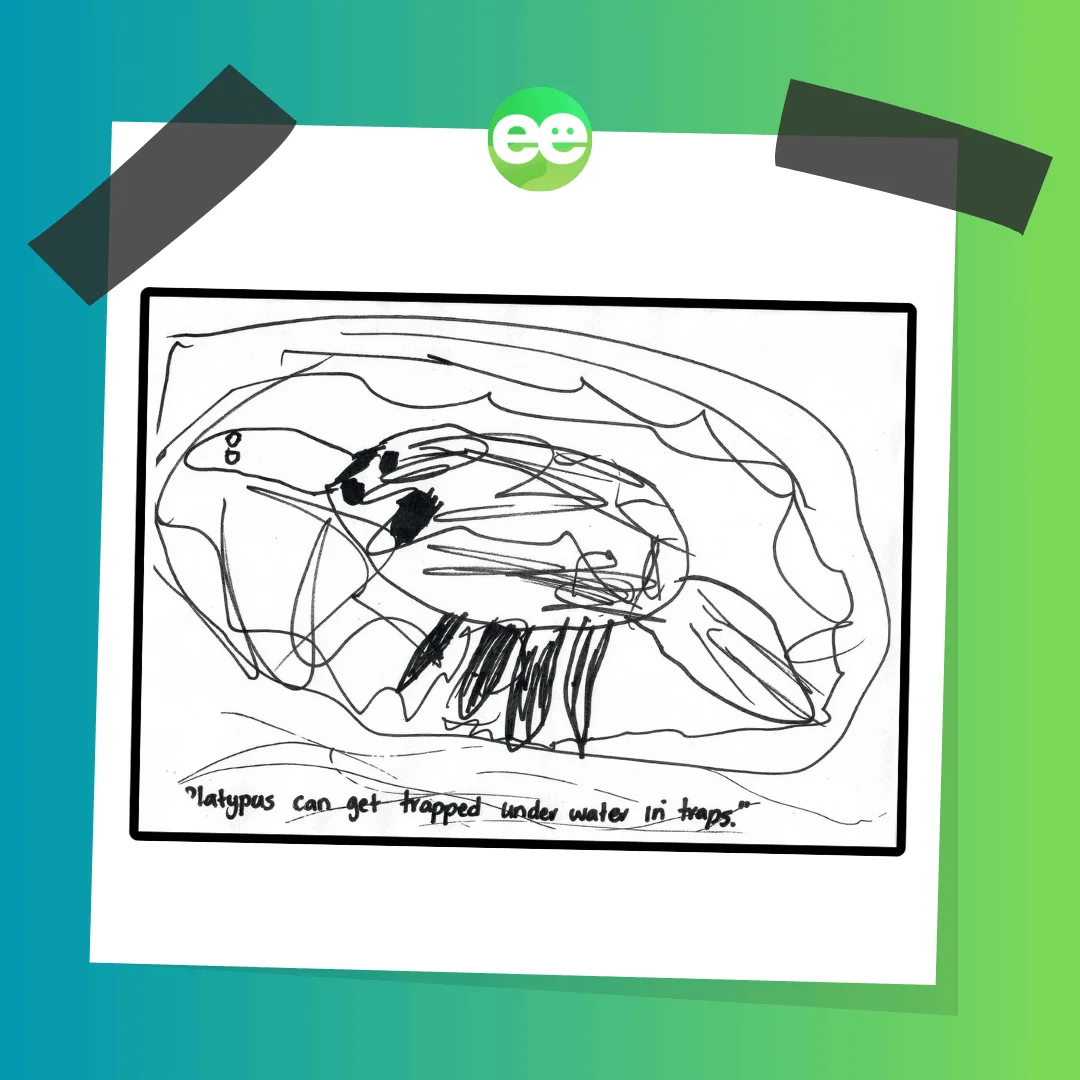
Scenario 3 - Outdoor play and problem solving
During outdoor play, I noticed the children were gathered around a puddle left by the rain.
They were trying to jump over the puddle, but kept splashing through the water instead. I saw a great opportunity to promote problem solving. "Hmm, what could we build to get over this puddle without getting wet?" I asked. The children paused to think. "A bridge!" suggested Maya. "Let's gather materials to build one," I said.
We collected sticks, boards, crates and stones. I encouraged them to plan designs first, then try constructing. The initial bridges tipped or sank. "Why do you think it collapsed?" I asked. Andre replied, "Maybe we need flat wood."
I nodded, "Let's test that theory!" The children persisted trying new shapes and materials until a sturdy bridge spanned the puddle.
When Isaiah exclaimed "We did it!" after crossing successfully, I responded "You sure did! What problem solving skills did you use to figure this out?" This got them reflecting on their perseverance. My intentional facilitation expanded their critical thinking in a fun, hands-on way.
Scenario 4 - Tommy's Twinkle Star
Tommy is 12 months old and I’ve noticed he watches intently when I sing nursery rhymes and make hand gestures.
Today during tummy time, I sat near Tommy and slowly sang “Twinkle Twinkle Little Star” while pointing to the glittery stars hanging from the ceiling. Each time I sang “twinkle twinkle”, I’d touch Tommy’s nose gently, eliciting big smiles. When I reached for a star toy and showed it to Tommy, he excitedly grasped it.
I intentionally repeated the song several times, allowing Tommy to explore the star. The nursery rhyme grabbed his interest while the gestures provided meaning and connection to the toy.
My intentional interaction encouraged Tommy’s language, cognitive and fine motor development appropriate for his age.
Intentional Teaching and The EYLF V2.0
I know many Australian educators reading this blog are currently concerned about how to ensure they are following the updated Early years learning framework (V2.0) so I wanted to include a little information here regarding intentional teaching and how it aligns with the EYLF.
Implementing intentional teaching strategies is crucial and a requirement for early childhood educators to meet high quality education requirements, so it’s important to understand how our intentional teaching connects to Australia's national curriculum framework - the Early Years Learning Framework (EYLF).
The EYLF outlines principles, practices and outcomes to support children's learning from birth to age 5 and provides a vital foundation for quality educational programs.
So how do the intentional teaching strategies I've been discussing align?
Quality intentional teaching enables us as educators to fulfil the goals and educational standards outlined in the EYLF V2.0. So, when we teach with intention, we are aligning our practice to the curriculum and standards that guide Australia's early education programs while also supporting compliance with those expectations.
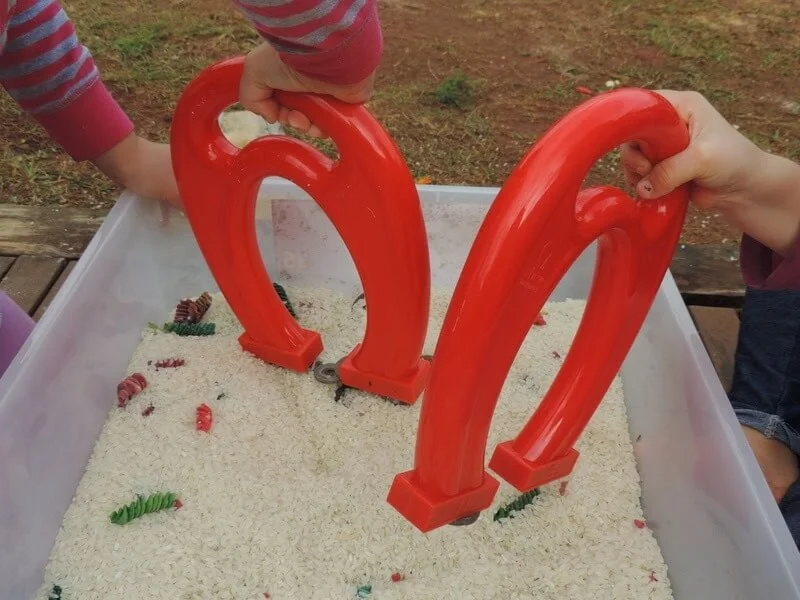
Let’s now take the theories, strategies and our knowledge of the EYLF V2.0 and apply them practically to the scenarios I shared above so you can see the connections in action…
Scenario 1 - Evan's frustration
This scenario can be linked to Outcome 1: Children have a strong sense of identity, specifically the aspect of children learning to interact in relation to others with care, empathy and respect. The educators intentional support and guidance helped Evan to understand and manage his emotions, promoting his social-emotional growth
This scenario also aligns with the new principle of "Strengthening the connection between play-based learning and intentionality" in EYLF v2.0.
The educator used a play-based situation (block tower tumbling) as a teachable moment to intentionally teach Evan about emotional self-regulation
Scenario 2 - Maya's interest in writing
This scenario can be linked to Outcome 5: Children are effective communicators, particularly the aspect of children engaging with a range of texts and gain meaning from these texts.
By providing various writing tools and encouraging Maya to explain her writing, the educator extended her literacy learning
This scenario also aligns with the new principle of "Aligning assessment and evaluation for learning development and wellbeing" in EYLF v2.0.
The educator observed Maya's interest in writing and drawing, assessed her skills, and then provided an environment and interactions that would extend her learning
Scenario 3 - Outdoor Problem Solving
This scenario can be linked to Outcome 4: Children are confident and involved learners, particularly the aspect of children developing a range of skills and processes such as problem solving, inquiry, experimentation, hypothesising, researching and investigating.
The children's efforts to build a bridge over the puddle demonstrated these skills
This scenario also aligns with the new principle of "Strengthening the connection between play-based learning and intentionality" in EYLF v2.0.
The educator used the outdoor play situation (puddle jumping) as a teachable moment to intentionally promote problem-solving skills
How Could An AI Education Assistant Help?
While technology will never replace an educator's expertise, AI chatbots can be powerful tools to strengthen your intentional teaching when used effectively and ethically.
The most important thing with this approach is to recognise that the AI assistant provides personalised guidance, but the educator remains the decision maker who knows the child best.
The AI won't have all the answers, nor should it - you are still the experienced early childhood professional with in-depth knowledge of the children and curriculum. Think of the AI as providing on-demand coaching to build on your skills.
With this collaborative style partnership in mind, let's look at how conversing with an AI Assistant (when you understand how to prompt it effectively), can provide personalised support as your educational assistant when trying to implement an intentional teaching approach.
Now let’s explore how using AI to support our daily intentional teaching throughout everyday practices across a typical busy day could look like in action…
Remember that we aren’t talking about scary robots here - the AI Assistant is just a chat window there to provide helpful recommendations through a collaborative conversation.
During planning time, you could ask your AI Assistant for a list of quick activity ideas related to your current learning outcome goals, curriculum standards, a child’s observed interest or the materials you have available.
The AI can respond with suggestions modified to your specific requirements instantly - based on your observations and knowledge of the child or group, saving you time thinking up suitable activities from scratch.
At the end of the week ask your AI Assistant to act as your reflective practise partner - giving you a series of reflective questions and prompts that will help you gain a fresh perspective about what worked, what didn’t and plan for improvements.
While observing during play, you may chat with the ai on your tablet or phone to help you brainstorm if a child could benefit from additional scaffolding.
It can analyse your provided notes on that child as you reflect in the moment and propose modifications to try or materials to introduce.
When on a quick break in a busy, stressful day when your program seems to be going out the window, pull out your phone and tell your ai assistant you're feeling overwhelmed and why.
It can quickly offer expertise as a mentor to build your confidence, support more positive self-talk and offer solutions and suggestions to the issue or challenge you are facing.
What will lead to the most beneficial outcomes for both child and educator is approaching the AI chatbot as an interactive educational assistant and mentor - not just a search engine.
Simple Strategies To Get Started
If you’re now feeling excited about the possibilities for your own planning and practice, try these tips to begin experimenting with AI chatbots as a first step:
1
Keep It Simple, Start Chatting
Start by researching chatbots designed specifically to support early childhood educators. Look for ones that align to your curriculum and are transparent about training processes and maintaining your digital privacy.
If you’d like to start your journey using AI Chatbots that already meet this criteria and are trained as Education Assistants (so most of the hard work and training is already done for you!) you can join our Empowered Educator Academy members who are already talking to their new AI Mentors and Assistants ‘Ellie Eylf’, ‘Dottie Documentation’ and ‘Lacey Leadership’ to decrease their overwhelm and enjoy their job again .
You’ll find step by step videos and huge library of AI chat prompts that you can simply copy and paste into the AI Assistants chat window. It’s an easy way to get started without needing any tech expertise.
2
Experiment & Test
If there is no money left in the kitty for professional development right now, you could also try using the free versions of the large language models, 2 of the most popular being Claude and ChatGPT.
You can still get good results by taking the time to create more thoughtful and detailed prompts than you would use with a specialised educational AI tool like the Academy Assistants. It’s all about experimenting…and you can definitely begin your journey with these free to use tools.
You’ll need to sign up for an account with ChatGPT or Claude using the links I shared above before using.
3
Start Simple, Review Responses
If you’re apprehensive when using those chatbots , start out with some simpler requests like asking for activity ideas tied to your weekly learning outcome goals. See how the suggestions compare to what you would create on your own or your knowledge of this topic.
If the AI assistant gives a response you disagree with, provide feedback to improve its response. View this as an ongoing mentoring relationship.
4
Collaborate With Families:
Discuss your experience with families and all staff to involve them in setting expectations around AI use to maintain trust, transparency and collaboration.
Educator AI Prompts For Intentional Teaching & Planning
If you need a little inspiration to begin incorporating some of these intentional teaching strategies into your planning and programs, try some of the prompting approaches below when chatting with an AI Assistant:
1
Brainstorm With AI To Understand & Reflect On Intentional Teaching
Use this approach to generate ideas and reflect on intentional teaching strategies with the help of an AI assistant.
2
Personalise Responses With Fill In The Blank Prompt Templates:
Learn how to personalise responses for individual needs using fill-in-the-blank style prompt templates, designed to align the AI's responses with the specific needs of the children in your care.
3
Add Your Own Observations Into The Prompts:
Enhance the AI's ability to provide specific guidance and responses tailored to the children's needs, interests, and strengths.
4
Guide The Conversation:
Collaborate with the AI to bring intentional teaching strategies and next steps to life in an educational mentor-like manner.
Brainstorming Prompts To Try...
Fill In The Blank Style Prompt Templates for Educators
These fill-in-the-blank style templates are designed to help you get personalised advice when you chat with the AI.
All you need to do is add in observations and your personal knowledge about the individual child (or group of children) you’re focused on. This way, the AI's responses will be more closely aligned to the specific needs of the children in your care based on the details you’ve provided.
By adding your own observations into the prompts, you can get specific guidance and responses back. It becomes a two-way street - you provide the details about your children, and the AI gives ideas suitable for their specific needs/goals/interests/strengths. The templates make it easy to chat with the AI in a more intentional way.
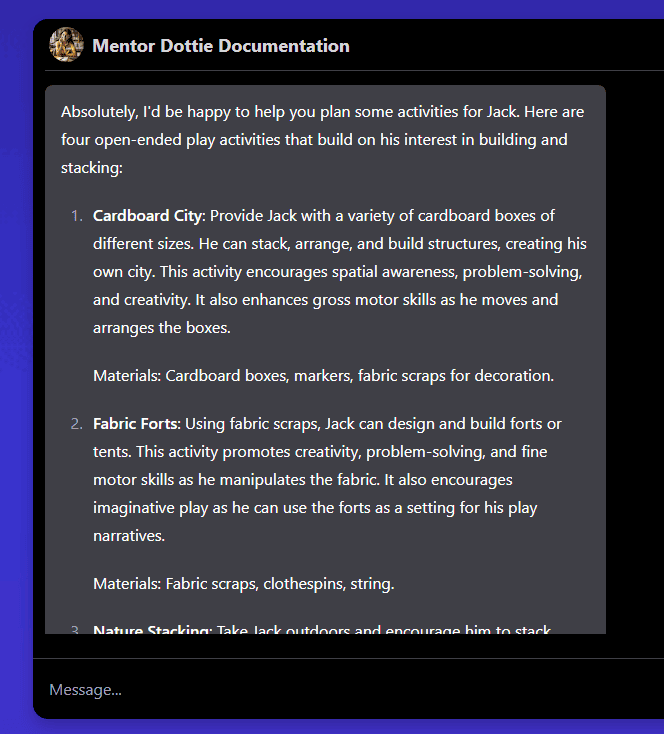
When you guide the conversation, the AI can mimic an educational mentor giving you suggestions for your particular needs. With educators thoughtfully directing the chat in this way, AI becomes a collaborative tool for bringing intentional teaching strategies and next steps to life.
Here’s a few examples to try based on the needs of different age groups:
Simply replace and expand the example content in the brackets to personalise for each child’s specific needs, outcomes and goals. Make sure to only use a first name and also include the age of the child to ensure responses are age appropriate.
AI Assistant Prompt Examples for Infants & Toddlers :
AI Assistant Prompt Examples for 2-3 Years :
AI Assistant Prompt Examples for 3- 5 Years :
You can use AI prompt templates like this as idea starters for seeking intentional teaching support across developmental stages and learning outcomes no matter the framework or standards you align with.
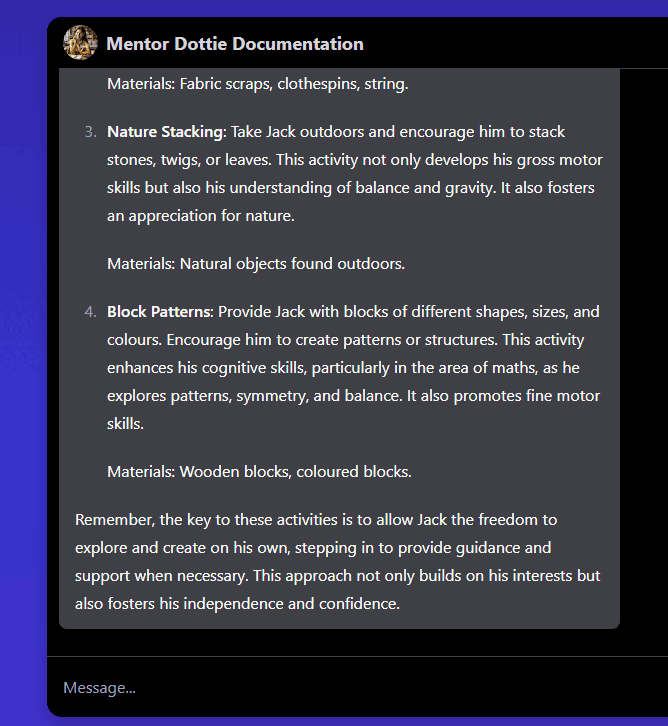
AI Ethics and Confidentiality In Early Education
Artificial Intelligence (AI) presents us with new opportunities for teaching and learning, but with these come ethical considerations.
You’ll want to keep the following information in mind to help you navigate the ethical use of AI in early learning settings.
I think AI chatbots show promise as educational teaching assistants if used responsibly and confidently . And after studying how to use AI in the early education sector for the past 18 months, I really believe that human educator -AI collaboration is key, with educators staying actively involved and learning more as they go to reap the time saving benefits while proactively minimising risks.
The possibilities of using AI to support an intentional teaching approach are certainly exciting, I hope you’re now feeling empowered and ready to experiment with some of the strategies I’ve shared throughout this post.
Through gradual integration and an openness to learn together, you’ll be amazed at how an AI assistant can save you time, provide helpful suggestions, and boost your intentional teaching practice.
Just remember - you're the AI's 'boss'. Approach your assistant as an eager student and collaborator that you’re consistently training based on your knowledge, expertise and understanding of the children, not as a magic solution that does it all for you because it doesn’t know everything that you do!
The human connections we make with children is irreplaceable in quality early childhood education.
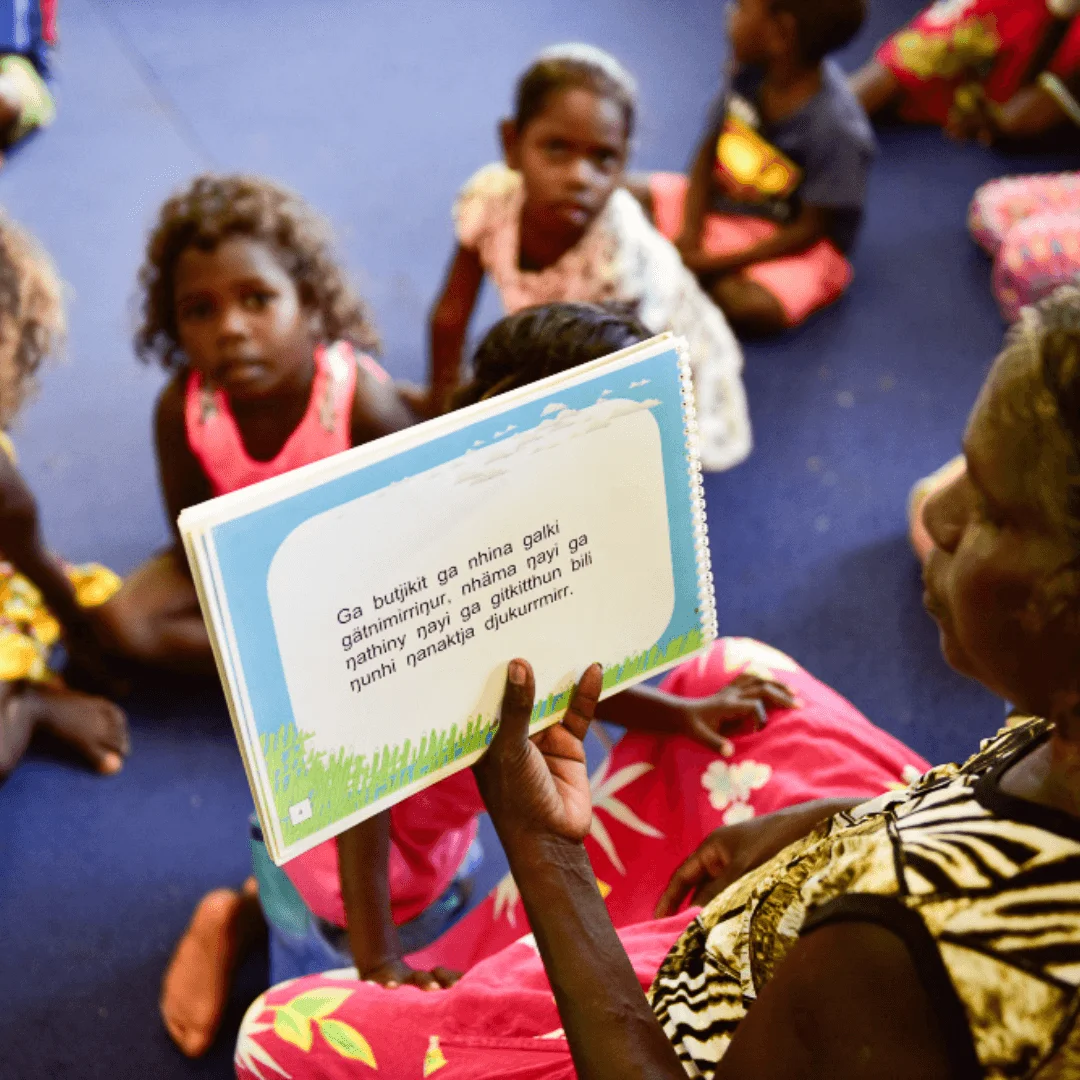
Why Am I Writing About AI Use In Early Education?
We’re just at the start of discovering how AI can provide more time for what matters most in early education…but we all know that’s not endless writing and documentation so why wouldn’t we want to change that if we could through the support of an AI Assistant?
I've committed to helping all educators understand how to use this new technology ethically and creatively to support their work as an early childhood professional...and lighten the load, so stay tuned for more articles like this.
Let me know in the comments below if you’ve started experimenting with artificial intelligence in your work yet… or if something in this article has given you the information and confidence you need to give it a try!
Watch the example below to see a small teaser of what's now possible for you with a little guidance from Academy Ai Assistant...
Why I'm Uniquely Qualified to Guide Your AI-Driven Planning Journey…
With over 30 years in early education, I've worn many hats and understand the diverse challenges educators face, from planning and documentation to juggling a work-life balance. As a Certified ChatGPT Expert, I'm now focused on making these tasks more manageable through ethical AI use.
My aim is to simplify AI for educators, offering customised digital chat tools and helpful resources that make planning less overwhelming and more achievable.
The ultimate goal? To give you the freedom to focus on meaningful interactions and playful learning opportunities with the children.
Let's collaborate to use AI tech in simple ways that free up your time for what you truly excel at and enjoy!

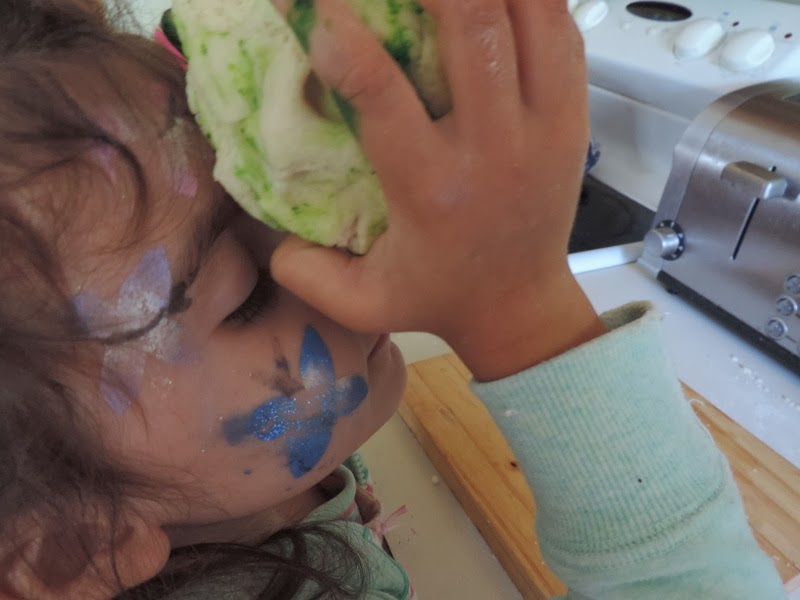
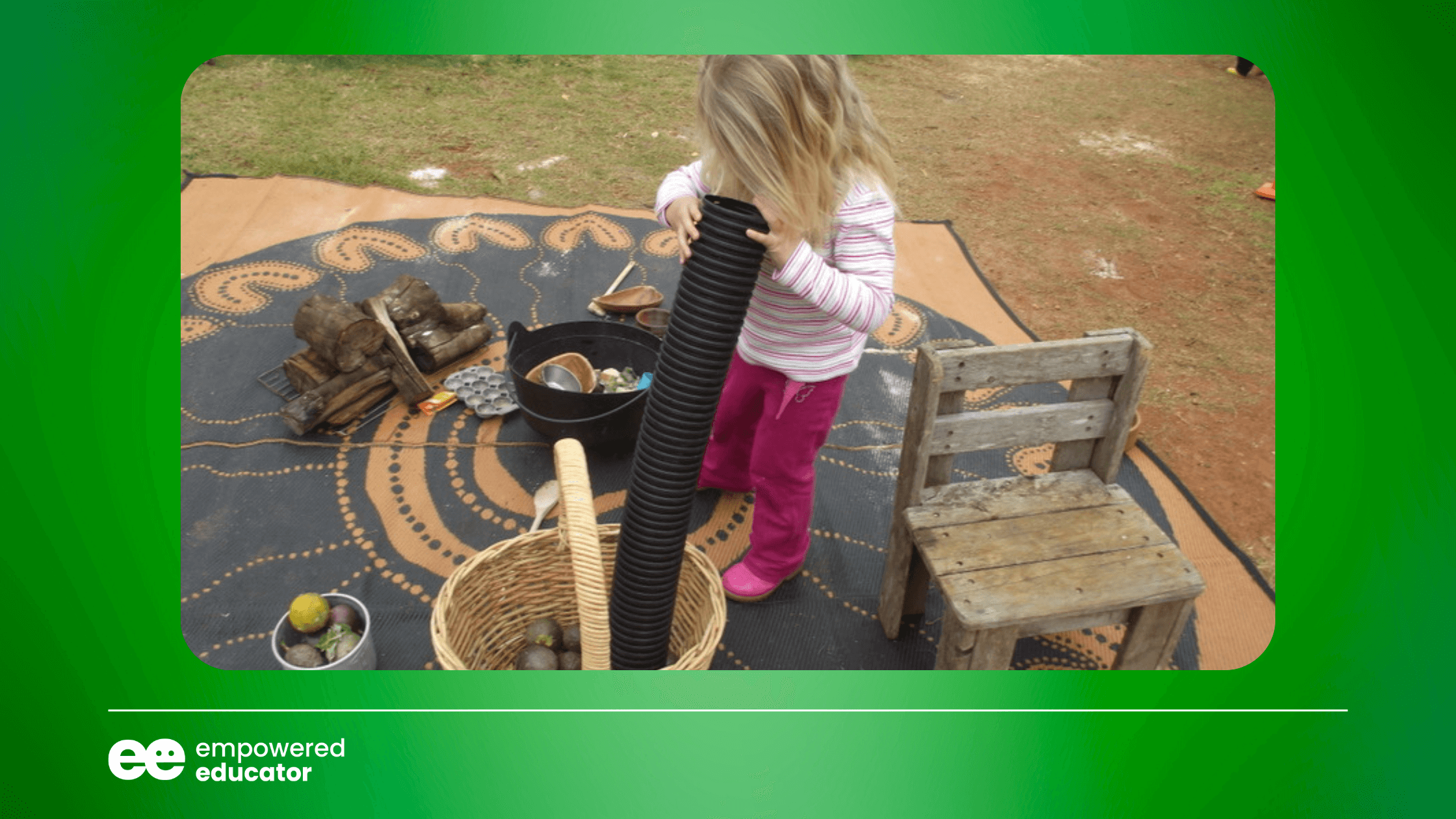
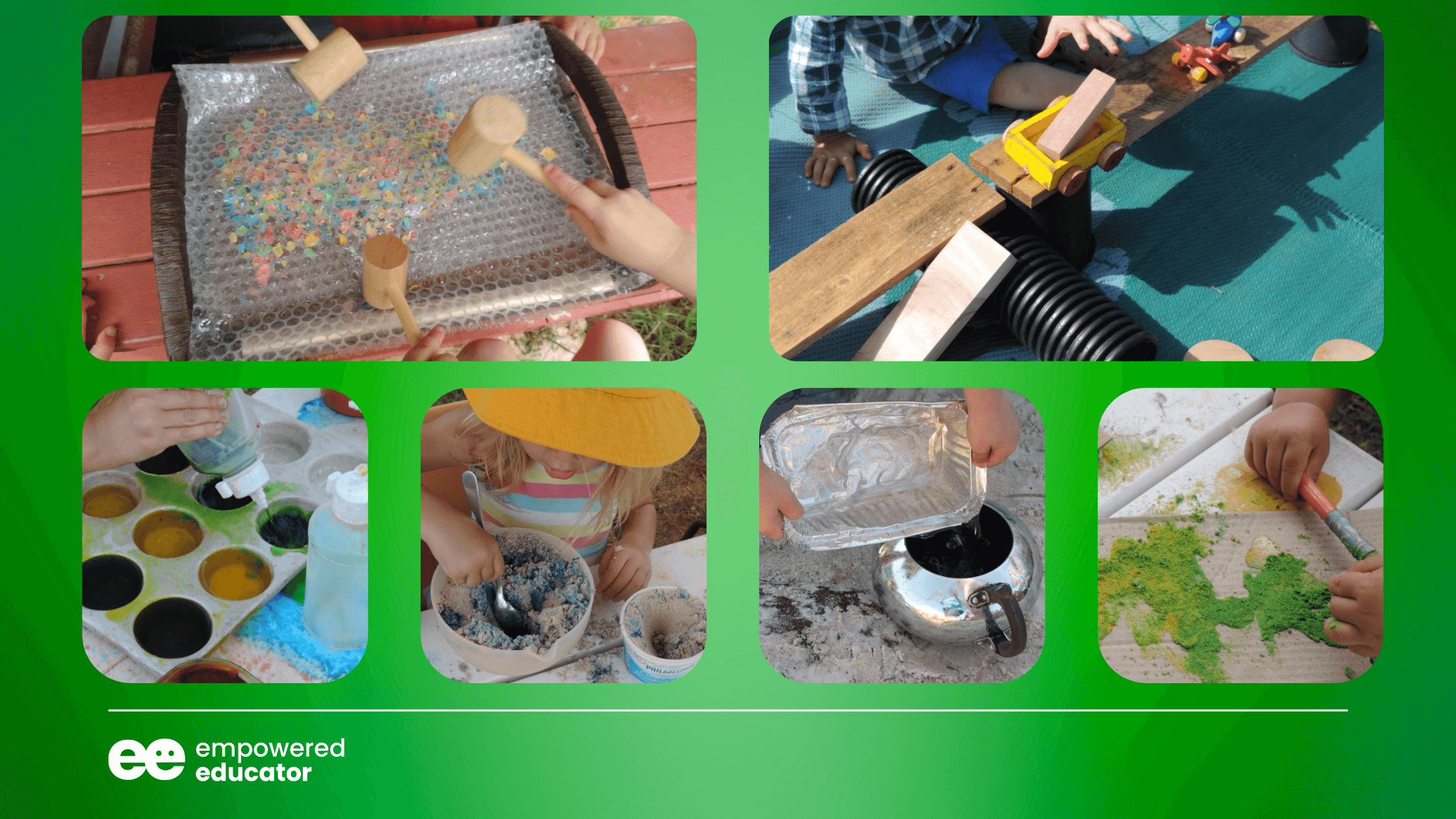
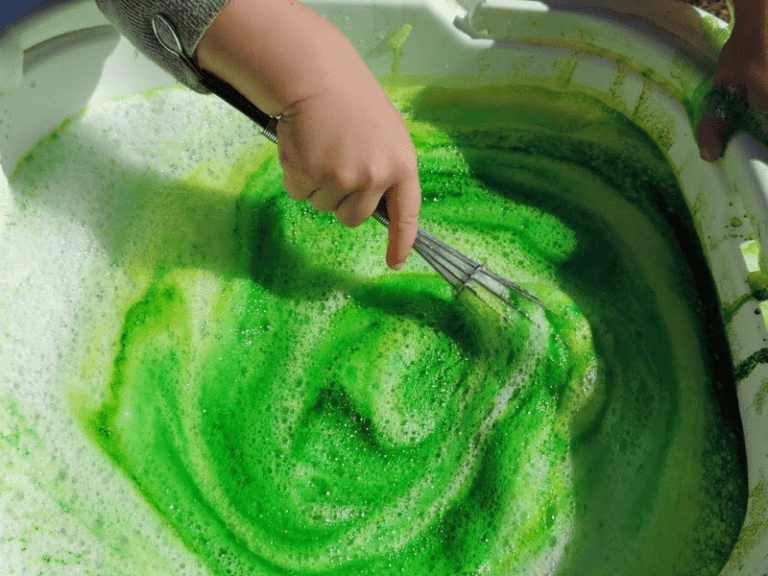
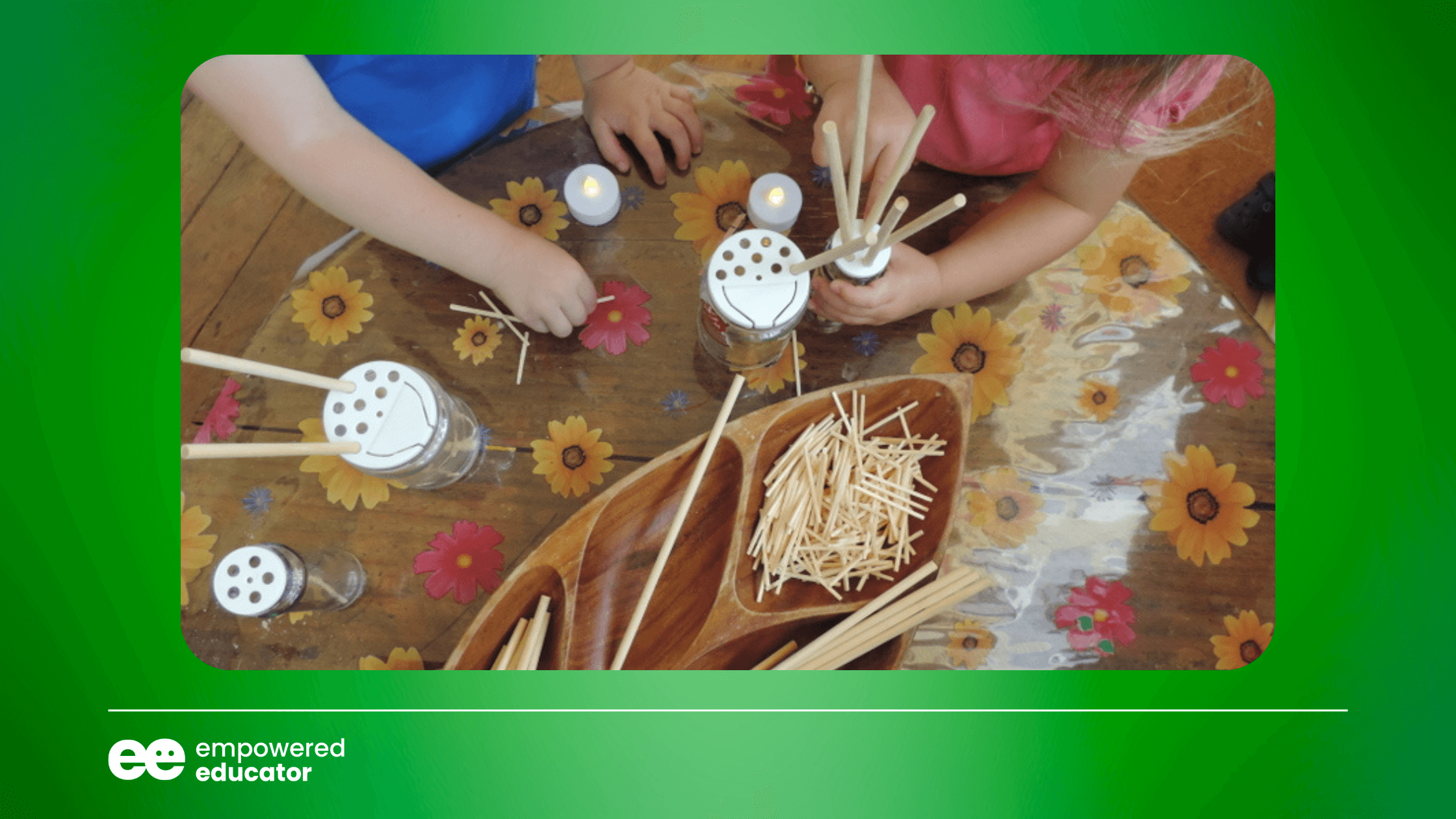
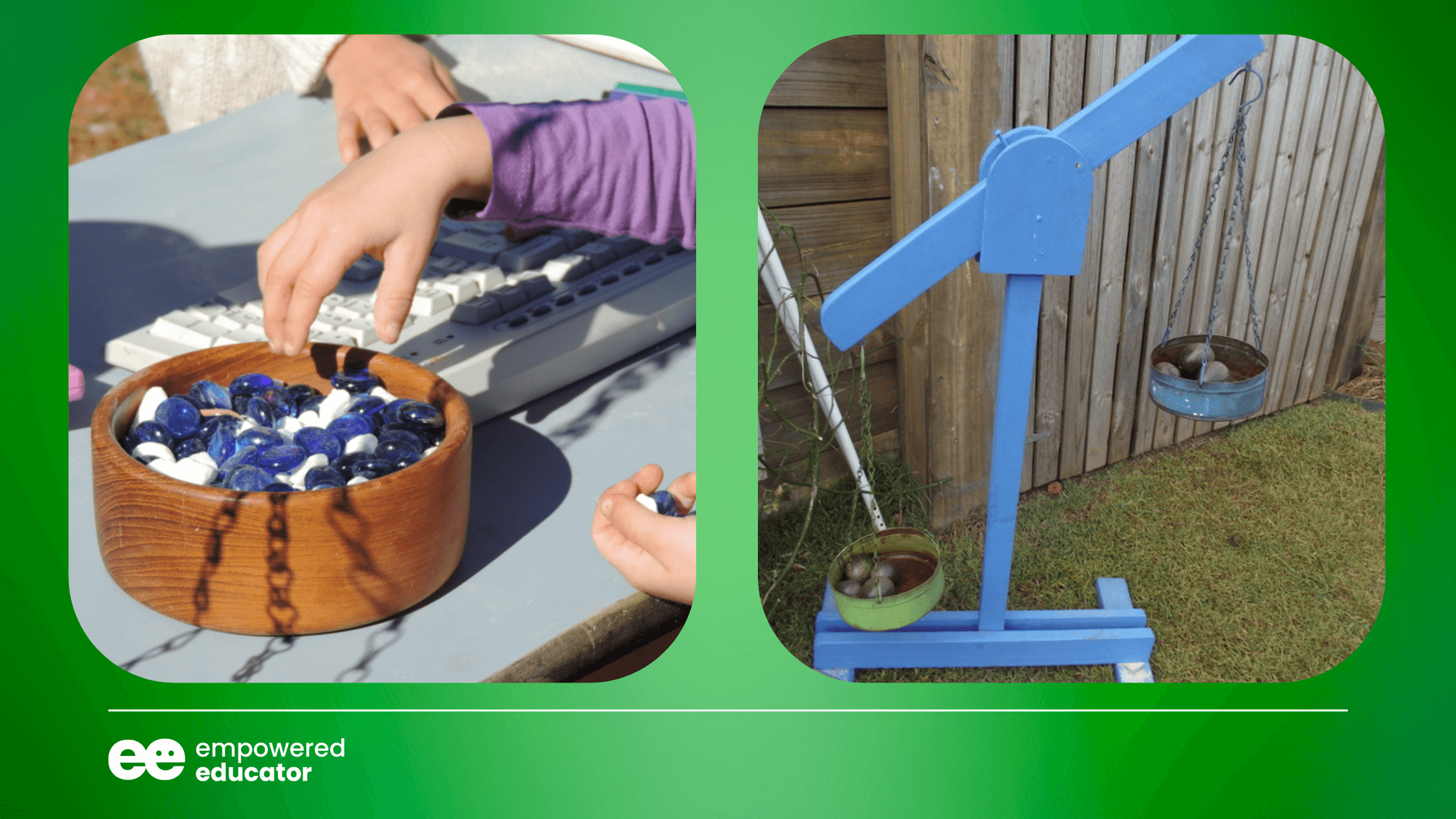
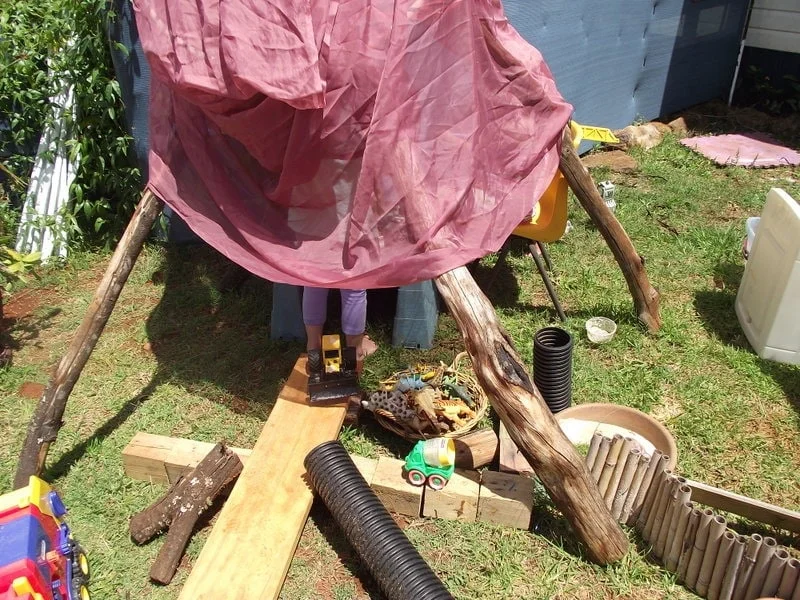

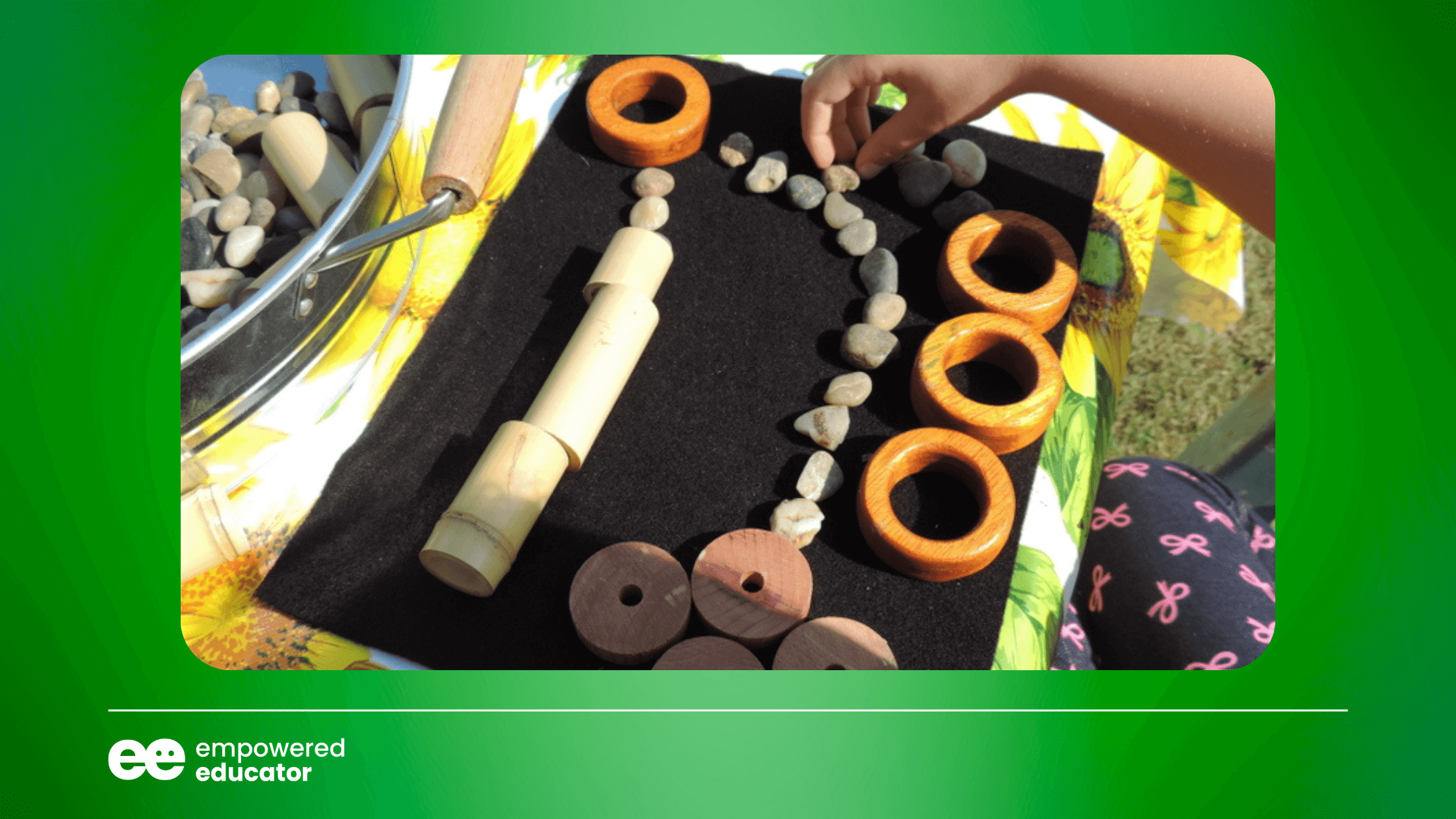
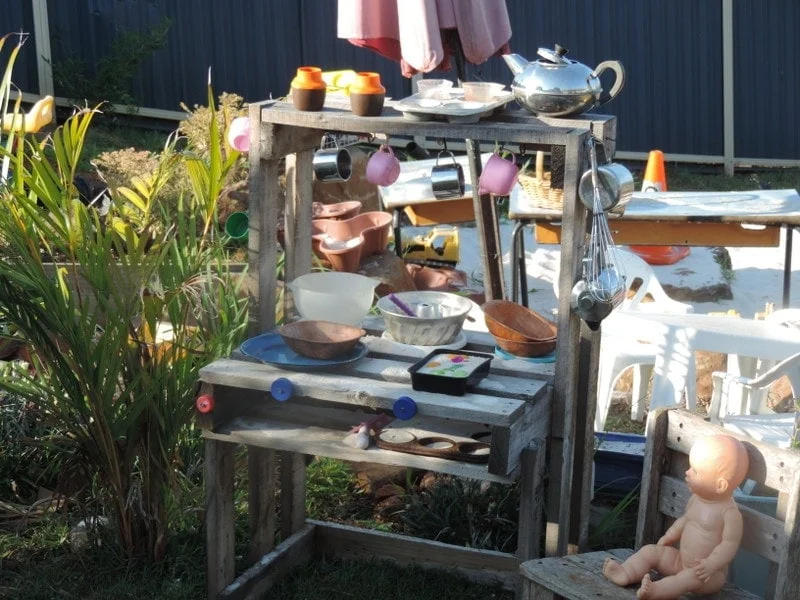

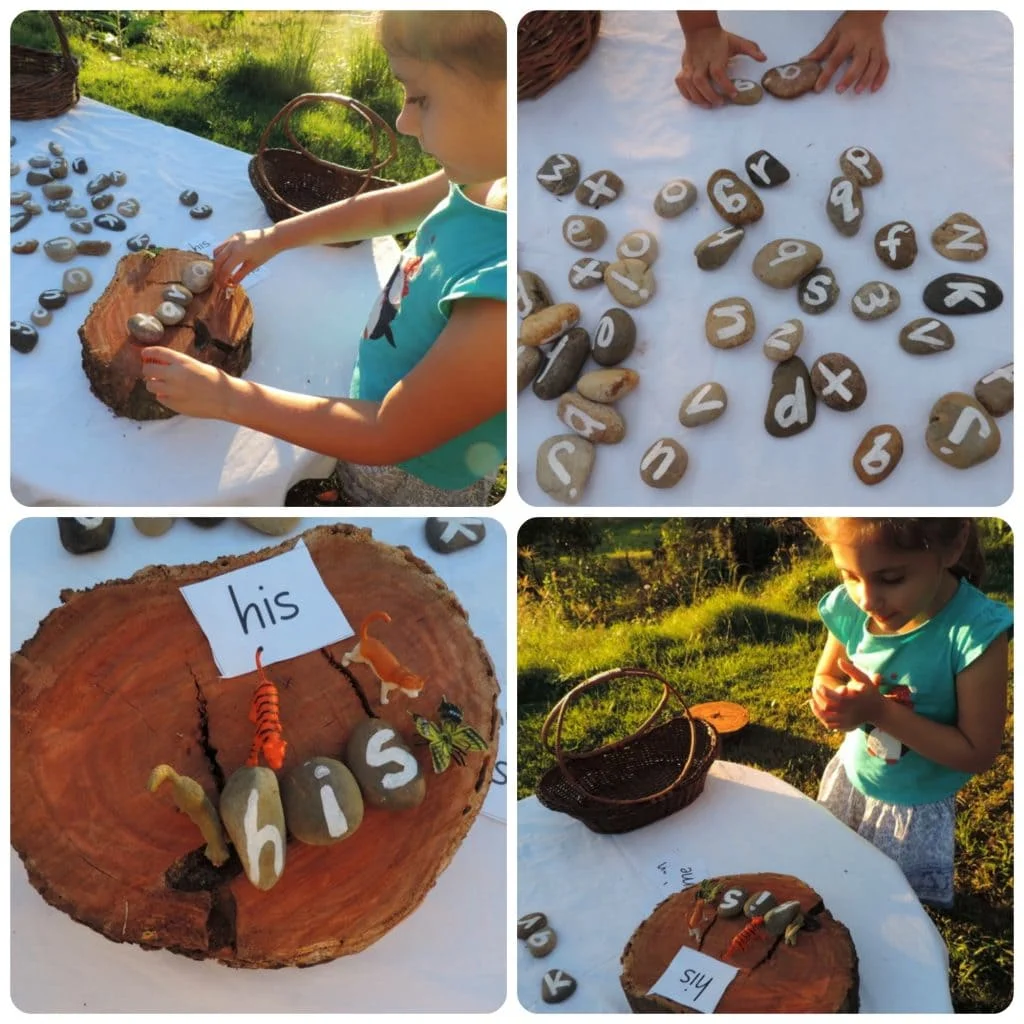
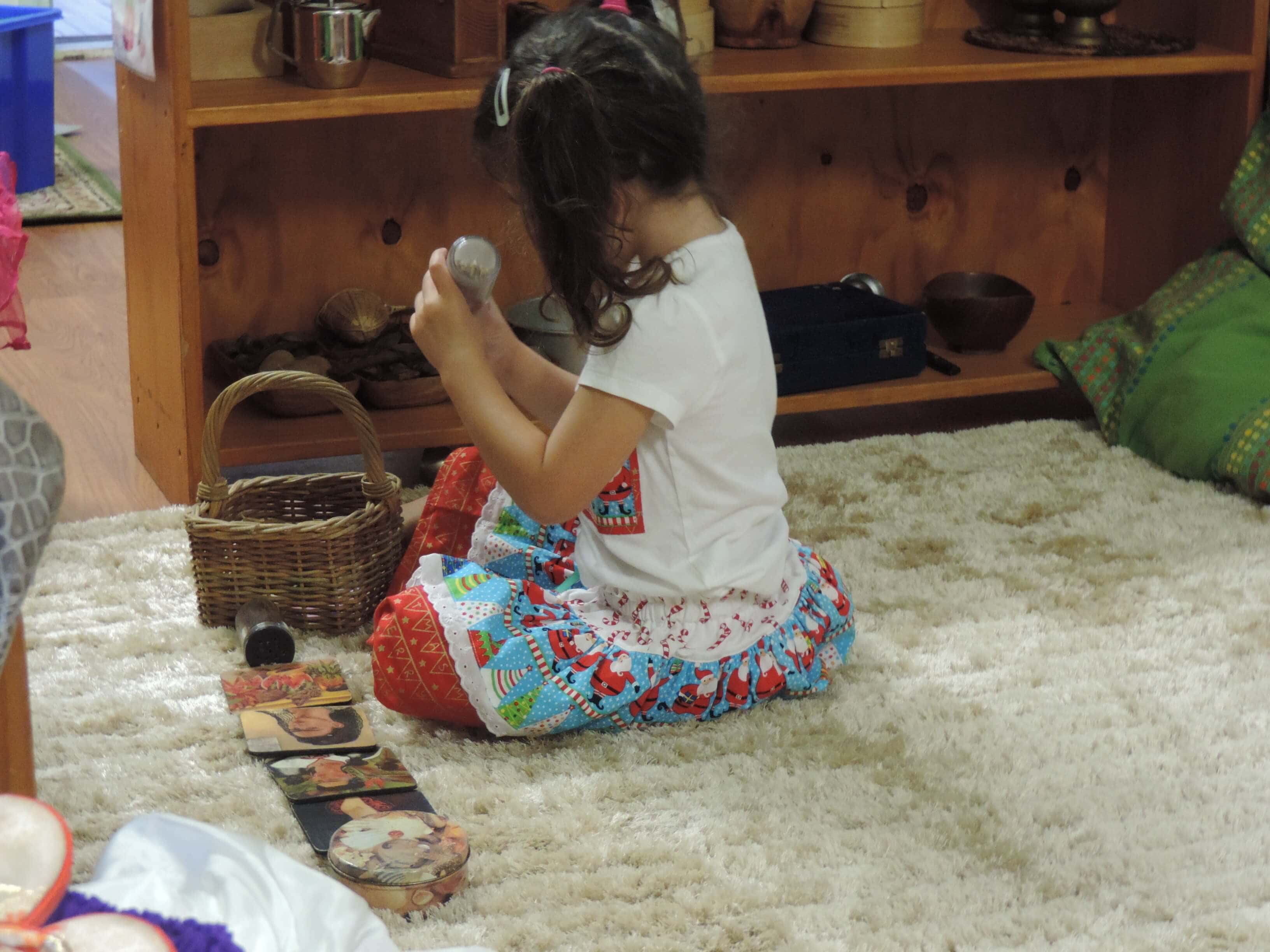
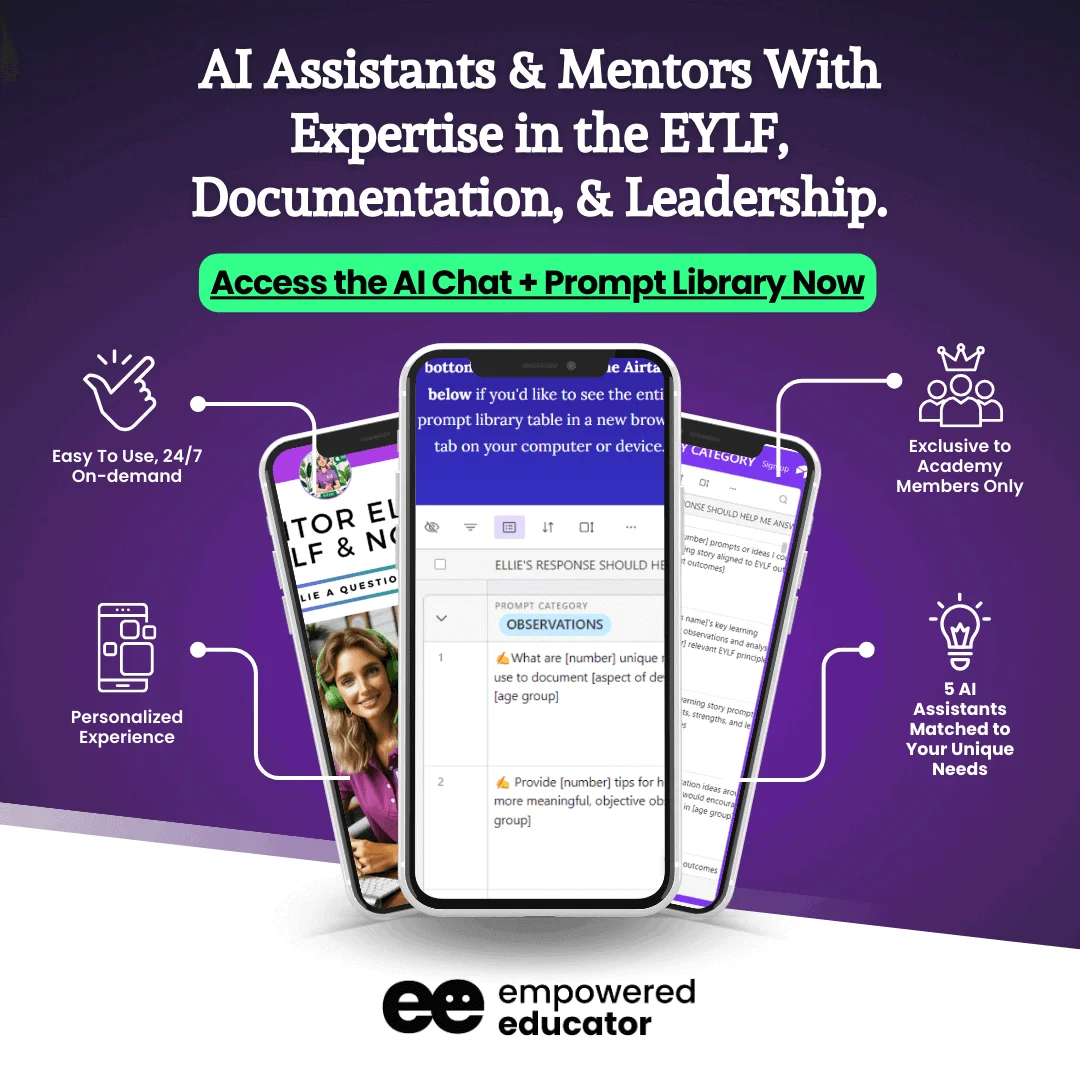
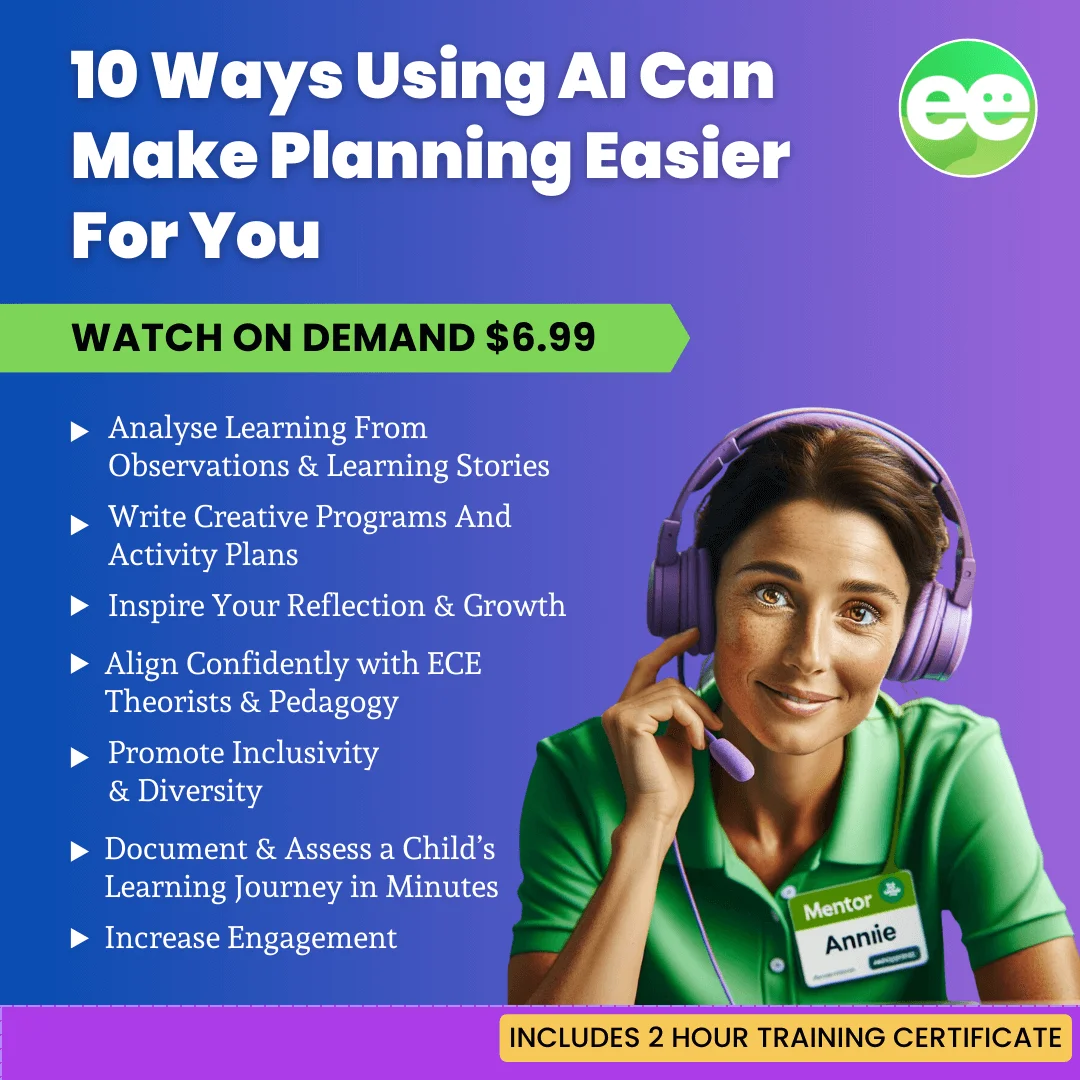
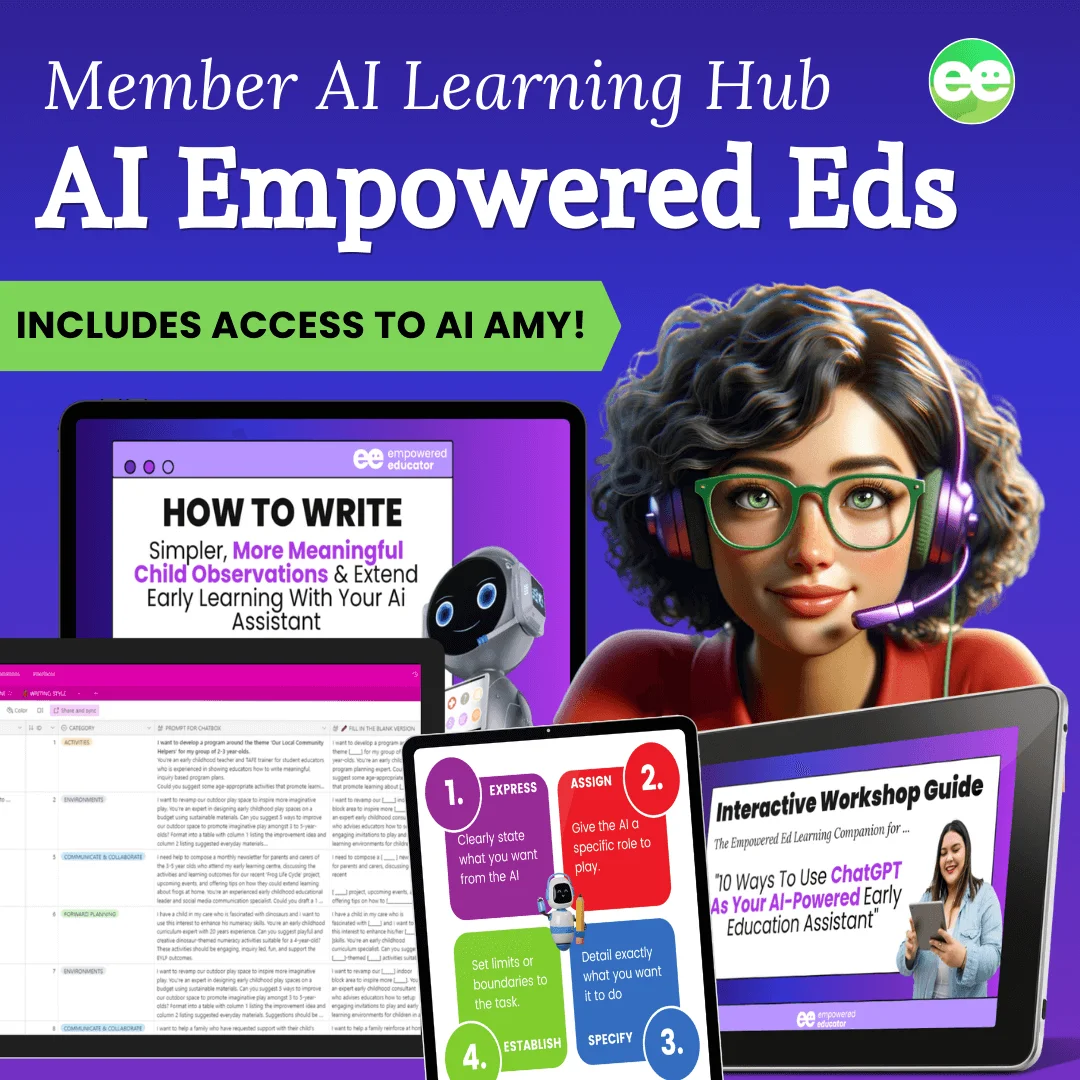
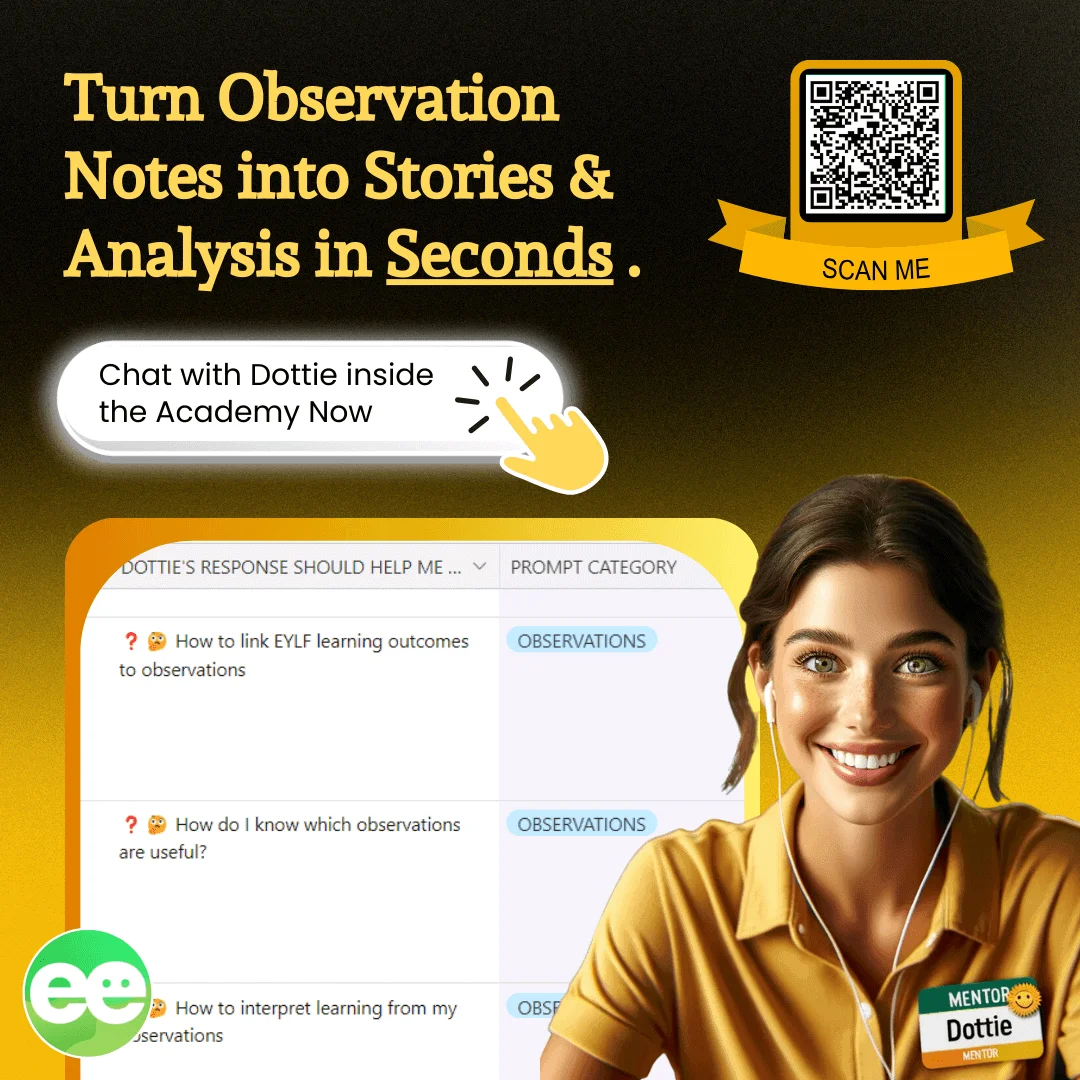
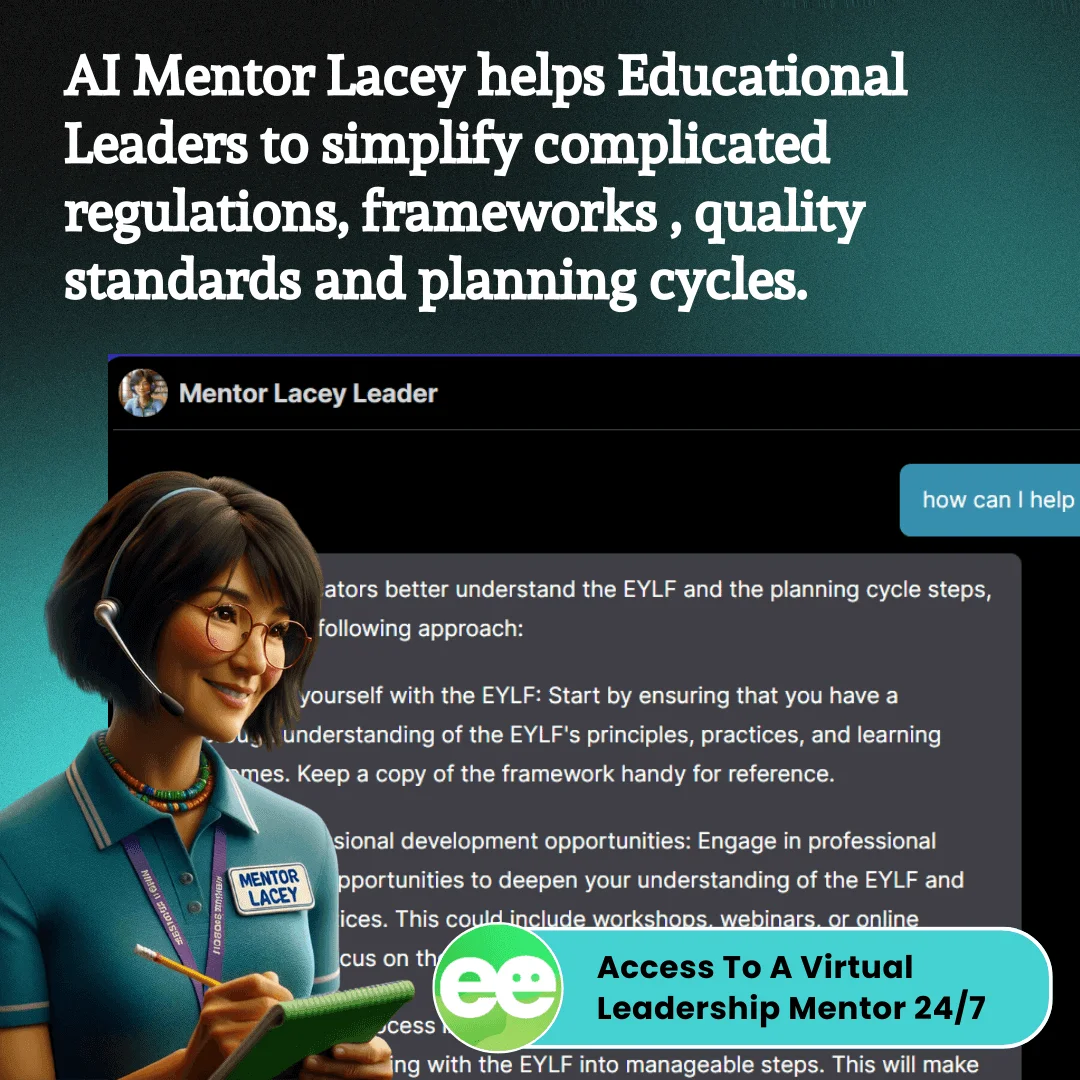
Leave a Reply